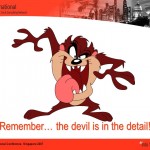

Entertaining themselves? Anything for the community?
This character however is the main theme / core of the ‘story’.....Briefly. What he has done in [A]. His decisions/ actions. How he comes to terms; should he want to; with the result of those same decisions / actions in [B, i.e.,the middle 'ground']...In order to get to [C]. Which again fits in with all esoteric lore. All authors suggest that within [B] is an ongoing process from [A]. "As above so below". The implication being just as it is a learning curve in [A] that same process is continued in [B]. Or more importantly- the main implication being- that all problems can still be resolved. Negatives can still be turned into positives. But all agree...that is only possible when its a personnel choice. That about turn, [u-turn] has to be a individual effort.
Analogy {in the modern sense of the word}: "I've done a lot of work in the community at home. I wanted them to know that mistakes happen but you can come back, if you work hard..." [Quote by Justin Gatlin after beating Bolt in the 100 meter final. 06/08/17].
"It seldom happens that a man changes his life through his habitual reasoning. No matter how fully he may sense the new plans and aims revealed to him by reason, he continues to plod along in the old paths until his life becomes frustrating and unbearable - he finally makes the change only when his usual life can no longer be tolerated." Tolstoy [1828 - 1910. Extract taken from the book 'Mind Magic' by Betty Shine]. Try ''plough''.
'45 Mercy Street' ?
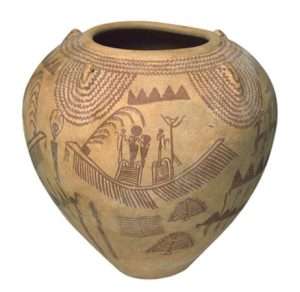
Remedy?
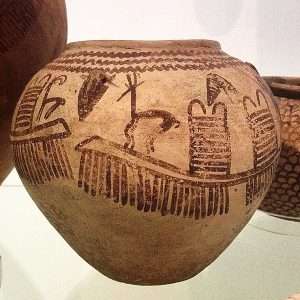
A leap across a gap?
A working example: ''We, like Odysseus, sail off to Ismarus again and again, persisting in automatic behavour. The inevitable results helps us accumulate a store of disasters that will eventually create the stimulus for change...'' [Page 88 'The Hero and the Goddess: The Odyssey as Pathway to Personal Transformation' / J. Houston].
Landscape equivalent?: "Is it possible to wake up"? Ouspensky wanted to know. 'It is', said Gurdjieff, but it is very difficult. Because the habit from which we are trying to escape is like a powerful current, and after trying to swim against it for a few minutes we gradually lose strength and go to sleep again. It is necessary to follow a precise method of escaping. Man is a machine. If he is to learn to rise above his 'mechanicalness' {Libra?} - he must understand the machine." ['The Occult' / C. Wilson].
Place of Rowing?
N.B. The Nile river - "the only river that rises above the horizon."
Question. Where?
From a different perspective i.e., an individual one: ''As the fire burns and transmutes the old, i serve grace.....The fear shivers up my spine and releases through my crown. Sek{h}met growls at the fear, the fear is the death of the truth, the fear is the dark moon where the light fails to shine, this moon is my gift; Khonsu holds the 'divine' in the form of timing, the timing of the ultimate alignment, the timing of the Divine....There is only purr-fection in the light and the shadow....." [Page 105 'Sekhmet: Transformation in the Belly of the Goddess' / N. Scully. Emphasis, this readers].
Try ''belly'' to enlarge and/or ''Conjunction''.
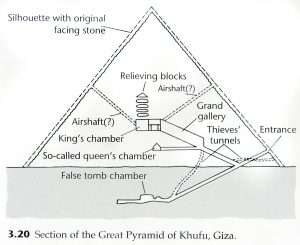
'Center'?
Side note: From a different perspective: "Astrology, being a system of symbolic interpretation of significant astrological facts, must obviously differentiate strongly between the Sun - a life - and light giving star which is the center of the astronomical system to which we belong - and planets which are merely reflectors or transmitters of light, and of which the Earth itself is one. If we refer to the Ego as ''a complex of representations which constitute the center of my field of consciousness and appears to possess a very high degree of continuity and identity'', it is clear that the astrological symbol thereof {geocentric?} is the Earth itself as seen from the birth place of the native. The continuous field of consciousness of any man is what is contained within the boundaries of his horizon, and by implications what, though below the horizon, will emerge into the field of his consciousness. In other words , the quadrature of the astrological chart {horizon and meridian - and especially Ascendant and Mid-Heaven} represents the form of the field of consciousness. The ego may be considered as the birth point itself, the center of the chart - or, in an even more accurate symbolism - the apex of the pyramid built on four angles of the chart...." [Pages 219-20 'The Astrology of Personality' / Dane Rudhyar].
Mind set?
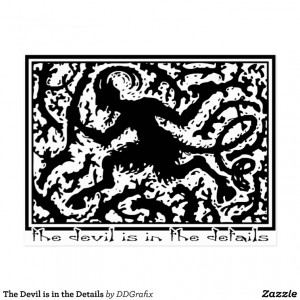 Continued: A working example?..."She was merciful and would cure anyone who repented and promised to atone for their actions. For example, a worker named Neferabu recorded that he had been punished by Meretseger for his sins. However, he confessed and did his best to make amends and the goddess forgave him and cured him of his affliction. These notions of ''sin'' and ''repentance'' were not common in ancient Egypt. They believed in Maat {balance and order} and chaos rather than ''good'' and ''evil'' - and NO other deity rewarded atonement or punished sin in this manner..." ['www.ancientegyptonline.co.uk/meretserger' ].
Continued: A working example?..."She was merciful and would cure anyone who repented and promised to atone for their actions. For example, a worker named Neferabu recorded that he had been punished by Meretseger for his sins. However, he confessed and did his best to make amends and the goddess forgave him and cured him of his affliction. These notions of ''sin'' and ''repentance'' were not common in ancient Egypt. They believed in Maat {balance and order} and chaos rather than ''good'' and ''evil'' - and NO other deity rewarded atonement or punished sin in this manner..." ['www.ancientegyptonline.co.uk/meretserger' ].
 Side note: ''The word 'sin' used in ancient Christian sources is the Greek word hamartia, which is derived from the art of archery and denotes ''missing the mark''....individuals can be be poor spiritual archers, because they can miss the mark....from the hitting the bulls eye on the cosmic target. All they can do is trust in a deliverence that comes from an external source {i.e., not that inner one i.e., subject material i.e., as one example by way of that duality clause}.'' [Page 154 'The Gnostic Jung'].
Side note: ''The word 'sin' used in ancient Christian sources is the Greek word hamartia, which is derived from the art of archery and denotes ''missing the mark''....individuals can be be poor spiritual archers, because they can miss the mark....from the hitting the bulls eye on the cosmic target. All they can do is trust in a deliverence that comes from an external source {i.e., not that inner one i.e., subject material i.e., as one example by way of that duality clause}.'' [Page 154 'The Gnostic Jung'].
REFRESHER: "Gnosis is spiritual knowledge obtained by divine inspiration. Knowledge being the one true route {66?} to god. Men are never cut off from 'god' by Sin - but only by ignorance." [Extract from a book by D. Monroe]. Anything?
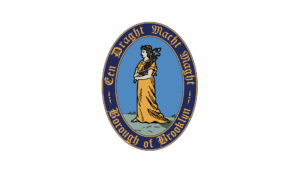
Carrying the Fasces of six rods {over left shoulder}?
Analogy of same..."...It appears that misery, starvation, and disease are whips of our karma that ultimately drive us to seek the true meaning of life." [Extract from the book 'Autobiography of a Yogi'. Enlarged elsewhere].
"Never say any man is hopeless, because he only represents a character, a bundle of habits, and these can be checked by new and better ones." [Swami Vivekananda].
Question. 'Younger' / 'elder' link?
Question 2. Is that the reason maybe, why all authors of this subject do continue to write and believe in it. The fear factor. Not wanting to believe that there is an end to it? Spending the time and effort to convince others? That is a possibility. But for this reader, at least, that possibility; when assessed and 'weighed' up with all 'its' relevant circumstantial evidence; is well down his list of 'possibilities'.
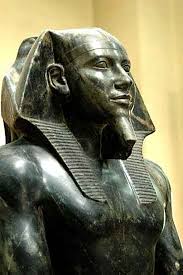
Recall what black is; in the main; symbolic of. Together with ''found upside down in a well within the Sphinx Temple.'' Understanding all that symbolism, especially in relation to the secret cavern of Sokar, gives clues as to Mr Khafres status. ''flint / obsidian'' links?
That 'effort' represented by the 'eternal apprentice', [explained elsewhere]. By way of a 'fire', i.e., the 'effort taken' ['plough' symbolism] - to understand something, by way of, thought/emotion/will. All explained elsewhere. Sufi equivalent...Al-Ghazali/s 'Path to Sufism'- [his deliverance from error]. Link to the 'fall', [key] i.e.,in relation to an individual effort, by way of a 'leap' [key. In Islams case that word is 'miraj']... of understanding, by way of the 'heart',[key]. Book twenty one of ' The Revivification of the Re-ligious Sciences.' That link to the 'middle way' in relation to a possible journey. An individual one.
"We cannot know the destination other than what it is not; what we have already exhausted or demonstrated untrue in our experience. A candidate's position in the initiatory structure can be best determined by the questions that concern them, not the answers that they think they have understood." [Extract from the book 'The Magister'. Mentioned elsewhere].
''...destination'' - relative to a 'journey' - ''...what we have already exhausted" in relation to those 'list of possibilities' - what the author of the above text defines as the ''way of exhaustion'' what others define as [by] way of 'negation'. All a link to the benefits of working something out by objectivity. Analogy of same - but now in the ''spiritual'' sense...
 "For Corbin, the Arabic words 'zahir' and 'batin' perfectly indicate the contrast and complementary between exoteric and esoteric. In Islam, everything that is, all external or apparent [zahir] phenomena conceal [and thereby reveal to whomever has eyes to see] a hidden, interior [batin] reality."................."Arabic accordingly proposes another set of terms: 'tanzil' and 'tawil.' Tanzil, which is the ordinary word for 'positive religion' or the letter of the Revelation, means [literally] ''to cause to come down.'' Tawil, conversely, means ''to cause to return,'' that is, to ascend or lead back [restore to its origin]........"Tawil is ''to bring something back to its origin'' - Hence he who practices tawil is one who turns his speech from the outer form to the inner reality." [Extracts taken from 'Alexandria' Vol. One. Mentioned elsewhere].
"For Corbin, the Arabic words 'zahir' and 'batin' perfectly indicate the contrast and complementary between exoteric and esoteric. In Islam, everything that is, all external or apparent [zahir] phenomena conceal [and thereby reveal to whomever has eyes to see] a hidden, interior [batin] reality."................."Arabic accordingly proposes another set of terms: 'tanzil' and 'tawil.' Tanzil, which is the ordinary word for 'positive religion' or the letter of the Revelation, means [literally] ''to cause to come down.'' Tawil, conversely, means ''to cause to return,'' that is, to ascend or lead back [restore to its origin]........"Tawil is ''to bring something back to its origin'' - Hence he who practices tawil is one who turns his speech from the outer form to the inner reality." [Extracts taken from 'Alexandria' Vol. One. Mentioned elsewhere].
"The Quran has an outer meaning and an inner meaning." [Quote by Muhammad]........"the outer knowledge which is the shell, protects the inner knowledge which is the seed." [Page 22, 39, of the book, 'Secret of Secrets'].
Mustard seed?
'Mans Search for Meaning' / Viktor Frankl.
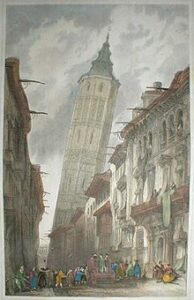
Leaning tower of Zaragoza {Babel?}.
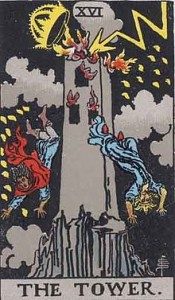 From a different perspective: THE providential event which manifested itself among the Celts revealed to their meditations two great truths—the immortality of the soul, and the existence of God. The first of these truths took hold of them more than the second. They understood well enough how the invisible part of themselves which felt, became animated, thought, and finally willed, could survive the destruction of the body, since it could even watch while the body slept, and could offer in its dreams pictures more or less filled with sensations, passions, thoughts, and pleasures whose actual effect no longer existed; but they could with difficulty comprehend the idea of a universal Being, Creator, and Preserver of all beings. Their feeble intelligence had still need of something perceptible upon which it might support itself. The power of abstraction and of generalization was not strong enough to sustain them at this metaphysical height.
From a different perspective: THE providential event which manifested itself among the Celts revealed to their meditations two great truths—the immortality of the soul, and the existence of God. The first of these truths took hold of them more than the second. They understood well enough how the invisible part of themselves which felt, became animated, thought, and finally willed, could survive the destruction of the body, since it could even watch while the body slept, and could offer in its dreams pictures more or less filled with sensations, passions, thoughts, and pleasures whose actual effect no longer existed; but they could with difficulty comprehend the idea of a universal Being, Creator, and Preserver of all beings. Their feeble intelligence had still need of something perceptible upon which it might support itself. The power of abstraction and of generalization was not strong enough to sustain them at this metaphysical height.
Side note: Voluspa signifies one who sees the universality of things.
And/or: Völuspá (also Vǫluspá, Vǫlospá, or Vǫluspǫ́; Old Norse: 'Prophecy of the völva, a seeress') is the best known poem of the Poetic Edda. It dates back to the tenth century and tells the story from Norse Mythology of the creation of the world, its coming end, and its subsequent rebirth that is related to the audience by a völva addressing Odin. Her name is given twice as Heiðr.[1] The poem is one of the most important primary sources for the study of Norse mythology. Parts of the poem appear in the Prose Edda, but the earliest known wholly-preserved version of the poem is in the Codex Regius and Hauksbók manuscripts.
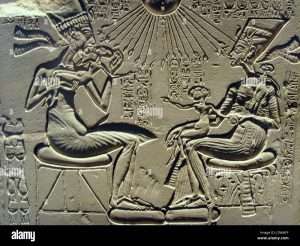
Helping hands?
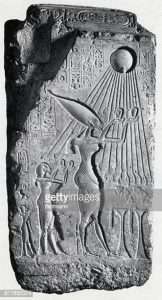
Continued: It is not that they did not admit the name of Sublime Father that Voluspa had given to this unknown Being for whom she had commanded respect; but this very name of Father, instead of raising them to Him, persuaded them rather to make Him descend to them, in presenting this Being to them only as the first Father of the Borean Race and the most ancient of their ancestors. As to the first Herman he was clearly revealed to them. They saw him such as memory had preserved in the traditions—terrible, indomitable in combat, their support, their counsel, their guide, and above all the implacable enemy of the Black People. So that one can surmise, without fear of erring much, that the first worship of the Celts was that of the ancestors or rather that of the divine human Soul, such as it exists from time immemorial in China and among the greatest number of Tartar people.
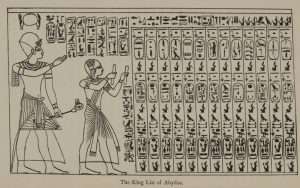
'Kings' list: Offerings to Ptah-Seker-Osiris. What about the 'female' aspect? Any 'gaps'?
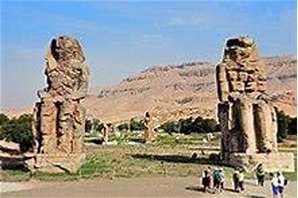
Ancestors: ''The whole work of 'turning the light around' uses the method of reversal. The 'beauties' of the highest heavens and the marvels of the sublimest realms are all within the heart: this is where the perfectly open and aware spirit concentrates. Confucians call it the open center {Amarna?}, Buddhists call it the pedestal of awareness {'horizon'?}, Taoists call it the ancestral earth, the yellow court {'sand'?}, the mysterious pass {'Place of Rowing'?}, the primal opening. The celestial mind is like a house; the light is the master of the house. Therefore once you turn the light around, the energies throughout the body all rise.''
And/or: Providence is the superior and intellectual part of Universal Nature, which I have called nature naturanie. It is a living law emanating from the Divinity, by means of which all things are determined with power to be. All inferior principles emanate from it; all causes draw from its depths their origin and their force. The aim of Providence is the perfection of all beings, and this perfection it receives from God Himself, the irrefutable Type. The means that it has to attain this end is what we call Jzme. But time does not exist for it according to our ideas. It conceives it as a movement of eternity. This supreme power acts only immediately upon universal things; but this action by a chain of consequences can make itself felt as a mediator for particular things; so that the smallest details of human life can be interested in it, or can be deducted from it, according as they are bound by invisible bonds to universal events. 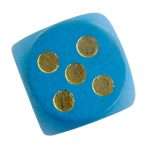 Man is a divine germ which it sows in the fatality of Destiny, so as to change it and to render it master by means of the Will of this mediatory being. This Will, being essentially free, can exercise itself as well upon theaction of Providence as upon that of Destiny; but with this difference, however, that, if it really changes the event of Destiny which was fixed and necessary and that by opposing necessity to necessity and Destiny to Destiny, it can do nothing against the providential event precisely because it is indifferent in its form and because it always reaches its goal by any route whatsoever. {Hermetic Interpretation of the Origin of the Social State of Man}.
Man is a divine germ which it sows in the fatality of Destiny, so as to change it and to render it master by means of the Will of this mediatory being. This Will, being essentially free, can exercise itself as well upon theaction of Providence as upon that of Destiny; but with this difference, however, that, if it really changes the event of Destiny which was fixed and necessary and that by opposing necessity to necessity and Destiny to Destiny, it can do nothing against the providential event precisely because it is indifferent in its form and because it always reaches its goal by any route whatsoever. {Hermetic Interpretation of the Origin of the Social State of Man}.
Quintessence to enlarge.
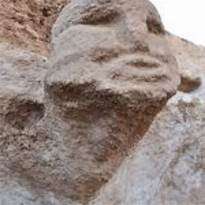
"Stretched?"
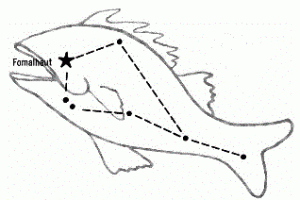
"...a small constellation that lies south of Aquarius...that drinks the waters poured by same. The brightest star = Fomalhaut = The mouth of the Fish''. {Wiki/Southern fish]. Question. 'Tail end' of something = S/E?
Working example: The stela is an historical record and royal decree that outlines all the damage that was done in the reign prior to Tutankhamun and outlines the actions that the new boy king will undertake to restore the gods to their traditional position. It was originally located in Karnak and now stands in the Cairo Museum. It was inscribed during the reign of Tutankhamun and while completed upon his command, due the boy’s young age and perhaps his relative ignorance of the traditional gods, it is assumed that significant assistance would have been rendered by his aides: Ay, Horemheb and Maya. In fact, there is evidence in the tomb of Maya, Treasurer of Tutankhamun, that he played a role: “I made splendid the temples fashioning the images of the gods for whom I was responsible”, and, “The King’s mouthpiece in order to furnish the temples and to fashion the cult images of the gods.” So while the restoration stela attributes the work to Tutankhamun, evidence in the tomb of Maya indicates he certainly had some assistance. The intended audience is most certainly the gods and the cults as well as the people of Egypt. This decree is meant for posterity, as it was Tutankhamun who sought justice for the gods and restored them to their traditional position.
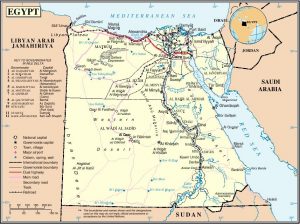
Where would it be represented within a landscape?
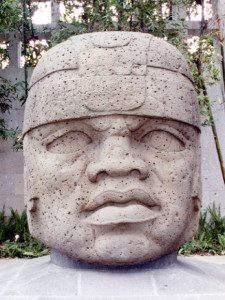
The Olmec head. From the base of the mouth to the middle of the forehead. Triangular in shape. The point [or Apex] of which is represented as that joining together [connectedness?] of a horizontal and vertical headband. And/or: "In the older Celtic religion {it was said} that the seat of the human soul resides in the head'' = 'Head of Annwn'? [Douglas Monroe]. Question. 'Seat of First Occasion'?
N.B. Recall the 'river' that once crossed - is where ''Solomon's Temple'' was 'built'. Think on it - relative to such books as 'A Test of Time'.
Most also imply that ones personnel journey especially B-C is ‘best done’ as a ‘community effort’. The collective one. As represented by those three ‘Plugs’ in the ascending passage of the Great Pyramid. Symbolic of something learned. In the positive sense..and now put to use. With this in mind all the characters have persons who they wish to seek out. ’Deceased’ friends / relations e.t.c. All contribute to all the results. The collective effort, which if you think about it has again a certain logic to it. Who else would you go looking for in a strange environment other than persons who you think are already there. Who hopefully know the answers to those anticipated questions about that brand new yet strange environment, i.e., its ‘daily’ purpose etc.
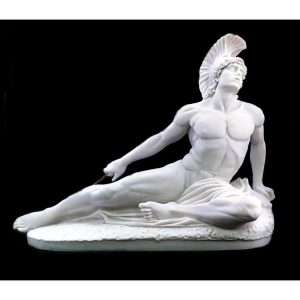
'Knee' = S/E?
As represented by those three granite ‘plugs’ in that most famous pyramid. They were not put there as some have suggested to stop persons gaining entry or similar theories. One would have been sufficient. Each one is symbolic of each pharaoh and/or those three universal principles. The ‘chipped’ one at the top represents Khufu and/or the importance of ''will''. Not complete = ‘chipped’. [Purposely done, ‘Pyramid of secrets’ / A. Alford]. He represents the ‘apprentice’. An individual still in the learning process. Another indication of same is ‘Knee’ symbology, i.e., Supplication, [ ‘Out of the shadows’./M.Palmer].
Question. A chip off the old block? Father/Son therefore 'son of' link?
Side note. Around those three plugs were found 'girdle-stones'. What do they represent?
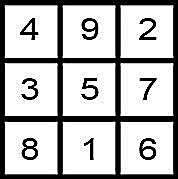
The 'magic' square of Saturn.
"The role of Poseidon is not so straight forward, and it may eventually be shown to have more than a single strand, but it is the epithets such as 'Earth-encircler' or 'Earth girdler' commonly applied to him that concerns us now. He takes part in similar astronomical activities to gods who are more readily associated with planets.
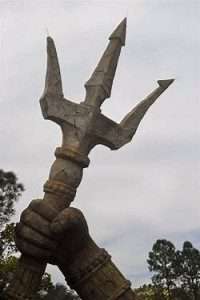
Metal of the mind.
These include Poseidon 'covering' or assuming the form of mortals {i.e.,as friend of mankind} - events that indicate the occultation or temporary obscuring of stars by a planet. Other phases create images of the rising and setting of Saturn, and its journey across the heavens in company - or in conjunction - with other planets. For these reasons Poseidon has been assigned to the planet known in later history as Saturn...In the course of the Iliad, gods - representing planets - assume the voices or characters of mortals {stars}. In this way, Homer records a phenomenon known as occultation, when the moon or a planet journeying across the sky passes in front of celestial objects that are further away, such as stars or outer planets, and temporarily obscures them. It may be that total obscuration occurs only when a god assumes the body of a mortal; when a god assumes the voice of a mortal or is said to be helping him, this may indicate that the planet is only close to the personal star of the warrior concerned." ['Homer's Secret Iliad'].
Libyan Penistasche and/or Egyptian Boatman's Girdle? [Page 24/47 'The Sky Religion in Egypt' / G.A. Wainwright].
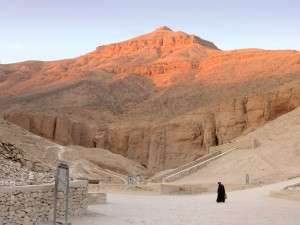
Sixteen steps that lead down into the tomb of Tut. Directly below Al-Qurn. The 'Horn'. Question. The Horn of Plenty?
A closer {correct?} reason for Poseidon to be linked with Saturn - in the modern {psyche?} sense of the work could be: "Astronomically, Saturn is the visual boundary of the solar system. Beyond Saturn lie the outer planets, Uranus, Neptune and Pluto, which represent various forms of the transpersonal experience. The outer planets account for experiences that take place in 'heaven' or in non-linear sacred time, whereas the planets from Saturn inward to the Sun deal with the earthly plane, or profane time - that which can be accounted for in the physical world...Saturn is the planet that binds us to incarnation and stands as the guardian of the gateway between the world of form and the imaginal realm...Liz Greene calls him 'The Dweller on the Threshold'...the boundary of visual experience...and indeed he is - mythologically, psychologically, astrologically, philosophically and astronomically." ['Saturn in Transit' / E. Sullivan].
''Inner/outer''/ ''naked/un-naked'' / ''line of sight / occulted'' - as a means...?
As is: 'Thrones' rule Saturn.
Psalm 'Twentyfour'.
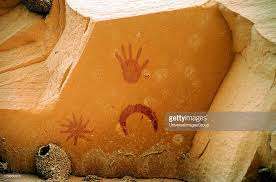
An individual turning point or a cosmic one? ''I am moved to desire by Venus and, when Saturn returns, i am sorely tested.''
From a different perspective: ''When it comes to the very highest points of human experience, what the American psychologist Abraham Maslow calls 'peak experiences', even finer balances are necessary. For example, we may be required to make decisions at the great turning points of our lives. Again, it is the common, if not universal human experience, that if we try to work out what is the right thing to do with our lives using all our experience, if we work at it with a good and whole heart, if we experience patience and humility, we can - just - discern the right thing to do...." [ Page 43 'The Secret History of the World' / J. Black].
James the Just?
Try ''Becoming'' - as a means...?

4 and 5 = 'nine' link?
REFRESHER: "Poseidon had gone to visit the Ethiopians worlds away. Ethiopians off at the farthest limits of mankind, a people split in two; one part where the Sungod sets and part where the Sungod rises. There Poseidon went to receive an offering, bulls and rams by the hundred - far away at the feast, the Sea-Lord sat {'throne'?} and took his pleasure." [From Book 1 'The Odyssey'. Translation by R. "Fagles].
So the question all the above raises is: Where within that 'defined space' would be the representation of a 'Throne' ?
Try ''Cepheus'' if only in relation to Ethiopia. Horn of Africa?
''Poseidon {the Earth - girdler} = Saturn'' - Together with - ''Zeus consort, Hera is the moon, and four of the five planets visible to the naked eye are represented by his immortal children, the fifth being assigned to Poseidon." While recalling that such 'locations' as Judah within, say, the Hebrew culture {landscape? therefore South?} is also identified with 'Saturn' {'Homer's Secret Iliad'].
A work in progress: ''Other sites such as the Glauberg warrior from west-central Germany, show that the La Tene culture emerged in the 5th century BC. A shift of power. The Hallstatt hill forts like Heuneburg were abandoned, and such burials close to them, like Hochdorf and Bettelbuhl, came to an end. Power shifted to the north, where high status burials emphasized the elite status of the warrior - something which had not seemed so important in the Hallstatt societies of central Europe. BUT their is evidence of continuity with that preceding Celtic culture: funerary carts {though now two-wheeled rather than four-wheeled} and drinking equipment were often included in elite La Tene burials {feasting?}.'' [Page 109-110 'The Celts' / A. Roberts].
The Wain and Poseidon to enlarge.
'Clover'?
 And/or: "As with all important alchemical stories, there are meanings within meanings in this account of Helvetius meeting with the mysterious adept {Imhotep link?}...The reason why he so carefully recorded the time and date with the stranger was because of its astrological importance. In the 'forenoon' {zenith?} of that day, no fewer than five planets were in Capricorn, and Saturn - the ruler of 'lead', and the ruler of the alchemical process which transforms lead - was in the 'scholarly degree' of 21 Capricorn. Helvetius seems to be of the opinion that the operation of alchemy, like the operations of true Will, involves the whole 'cosmos' - that for true 'magic' to work, the Heavens and Earth must be in accord." ['The Zelator']. Try ''true will'.
And/or: "As with all important alchemical stories, there are meanings within meanings in this account of Helvetius meeting with the mysterious adept {Imhotep link?}...The reason why he so carefully recorded the time and date with the stranger was because of its astrological importance. In the 'forenoon' {zenith?} of that day, no fewer than five planets were in Capricorn, and Saturn - the ruler of 'lead', and the ruler of the alchemical process which transforms lead - was in the 'scholarly degree' of 21 Capricorn. Helvetius seems to be of the opinion that the operation of alchemy, like the operations of true Will, involves the whole 'cosmos' - that for true 'magic' to work, the Heavens and Earth must be in accord." ['The Zelator']. Try ''true will'.
All as a means...?
Conjunction?
As is 3 degrees Sagittarius.
2021?
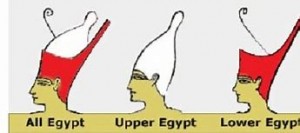
Try ''Butterfly'' - make a connection to ''Bee''. Honey?
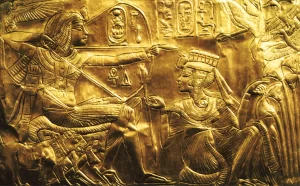
Giving directions? East? Copper to enlarge.
As is {but now from a different perspective}: "The strength figure is girdled and garlanded with a chain of 'red roses' and 'green leaves', these complementary colours indicating that passions should be held back at a safe distance from each other throughout our courses of consciousness. There are two roses in the garland, the number of Wisdom, and six in the girdle, the number of Beauty {which makes another likeness between this trump and temperance}.
'Eight'?
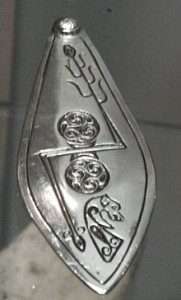
Leaf?
Nevertheless, there are four bunches of leaves sticking up from the garland on the head like horns, and horned figures have always stood for strength, while four is the number of Mercy on the Tree. Mercy with Strength. Just above the garland, two or three little dots represent bees attracted to the flowers, and the sweetness and strength symbology of the bee and lion are highly significant with this card." ['The Talking Tree' / W. Gray. Chapter Twenty].
Side note: ''{courses} of consciousness'' = Poseidon link? i.e.,Master of the Waters and/or Tamer of Horses. See it?
And/or: ''Of all the wild feline big cat families - only lions live in groups.'' ['Tipping Point'].
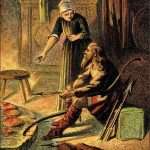
Leavened or UNleavened?
"Something extra: "The Beltain festival was concerned not only with prevention but with fulfilment: with death and sacrifice, and with hope of continuing life and fruition. Side by side with the darker episodes we find happier customs: the garlanded tree or maypole, with its promise of sexual license; the feast of food stored and closely guarded throughout the months of winter; the promise of healthy stock and a rich harvest. But underlying the tradition of the May Day celebrations were the baking of the ominous bread....and sacrifice." {|Page 38 'The Life and Death of a Druid Prince' / Ross + Robins}.
'Burned' to enlarge.
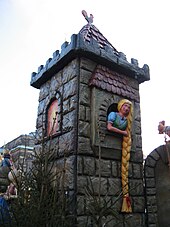
Dresden {Saxony} Germany. Rooster on top. Rooster also on top of Notra Dame roof. 'Forest of oaks'.

'Three and Four'? "Comb" to enlarge.
And/or: "Rapunzel" (/rəˈpʌnzəl/ rə-PUN-zəl, German: [ʁaˈpʊnt͡sl̩] ; French: Persinette) is a German[1] fairy tale most notably recorded by the Brothers Grimm and published in 1812 as part of Children's and Household Tales (KHM 12). The Brothers Grimm's story was developed from the French literary fairy tale of Persinette by Charlotte-Rose de Caumont de La Force (1698), which itself is an alternative version of the Italian fairy tale Petrosinella by Giambattista Basile (1634).[2][3]
The tale is classified as Aarne–Thompson type 310 ("The Maiden in The Tower").[4] Its plot has been used and parodied in various media. Its best known line is, "Rapunzel, Rapunzel, let down your hair".....
The "Maiden in the Tower" archetype has drawn comparisons to a possible lost matriarchal myth connected to the sacred marriage between the prince and the maiden and the rivalry between the maiden, representing life and spring, and the crone, representing death and winter.[22]
'Bower'?
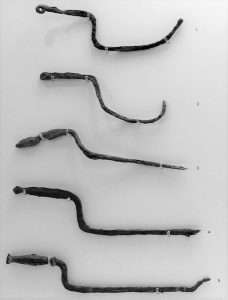
'Keys' to Opening of the 'mouth'?
Hint, hint or would that be knock, knock?..."To be sure, twenty is not exactly interesting for mystical and magic pursuits, but on the other hand, it is extremely important in the formation of number systems. For the simple reason that the fingers and toes add up to 20, this number forms the basis for counting in many cultures. Among the Celts, for example, 40 is called two times 20.
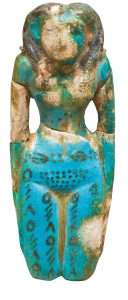
Hathor's healing talisman: Truncated at the 'knees'.
The Ainu in northern Japan have a very similar way of counting and express, for instance, 80 as 4 times 20, which corresponds exactly to the French 'quatre' {four} 'vingts' {twenty}. The Maya used to connect 20 with the solar deity just as in ancient Babylonia it was linked with Samash, the sun god. In Quiche, the Mayan writing system, the cipher for the number 20 is a human figure, and among the Hopi, a child is given a name on the twentieth day to become a real human {nickname?}. In medieval Christian exegesis, on the other hand, 20 was taken to point to man's realization of the 10 Commandments in act and intention, or else as a product of 4 times 5, that is the 5 books of the Pentateuch, which is the law, and the 4 Gospels, which mean grace..." ['Mystery of Numbers' / A. Schimmel}.
20+64?
 N.B. "It took twenty years to train as a Bard....They were trained in poetry, mythology, story telling, astrology, herbalism, the development of psychic faculties, magic, hypnotism and the interpretation of dreams." [Page 81 'Apollo Versus the Echomaker' / A. LUNT].
N.B. "It took twenty years to train as a Bard....They were trained in poetry, mythology, story telling, astrology, herbalism, the development of psychic faculties, magic, hypnotism and the interpretation of dreams." [Page 81 'Apollo Versus the Echomaker' / A. LUNT].
Side note: "An alternative view is that Ag was imported to Egypt, possibly via Byblos on the Lebanese coast, owing to many Ag objects found in Byblos tombs from the late fourth millennium (Prag, 1986: 38). Exchange mechanisms between Egypt and Lebanon are attested from the Naqada IIIA1 period (c. 3320 BC) and probably earlier (Hartung, 2001, Hartung et al., 2015, Ownby et al., 2022). Over the ensuing centuries, Egypt developed intensive trade relations with Byblos and the region. By the 4th Dynasty, the Egyptian state also sourced commodities directly or through intermediaries, down-the-line and indirect networks (Sowada, 2009: 245–55). By the late Old Kingdom (c. 2300 BC), networks for metals extended eastward, accessing silver from Ebla (Marcolin and Diego Espinel, 2011, Biga and Steinkeller, 2021).
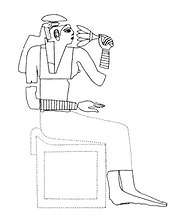
'Cedar' / 'Bracelet' to enlarge. 'Right angle'? AND/OR: "The burial chamber included many beautiful objects made of gilded wood, including a portable pavilion, a carrying chair, a bed, several wooden boxes and two armchairs. The wooden artifacts were very well preserved."

Ralph Tawangyaouma, Hopi Stamped Silver Cup.
The tomb of queen Hetepheres I (Tomb G 7000X) was discovered at Giza in 1925 by the Harvard University–Museum of Fine Arts (MFA) Joint Expedition (Reisner, 1927). Hetepheres was one of Egypt’s most important queens: wife of 4th Dynasty king Sneferu and mother of Khufu, the greatest builders of the Old Kingdom (c. 2686–2180 BC). Her intact sepulchre is the richest known from the period, with many treasures including gilded furniture, gold vessels and jewellery (Harvard, 2023). The bracelets were found surrounded by the remains of a wooden box covered with gold sheeting, bearing the hieroglyphic inscription ‘Box containing deben-rings’ (Reisner, 1927: 21) (Fig. 1A). Twenty deben-rings or bracelets were originally interred, one set of ten for each ARM, originally packed inside the box.....
The bracelets, made of a metal rare to Egypt, are a statement of royal privilege and taste.

Ralph Tawangyaouma, Hopi Stamped Silver Bracelet
The thin metal worked into a crescent shape and the use of turquoise, lapis lazuli and carnelian inlay, stylistically mark the bracelets as made in Egypt and not elsewhere (Petrie, 1901:Pl. ix.4; Aldred, 1971: 33-4, pl. 13). Each ring is of diminishing size, made from a thin metal sheet formed around a convex core, creating a hollow cavity on the underside. Depressions impressed into the exterior received stone inlays forming the shape of butterflies. At least four insects are depicted on each bracelet, rendered using small pieces of turquoise, carnelian and lapis lazuli, with each butterfly separated by a circular piece of carnelian. In several places, pieces of real lapis have been substituted by painted plaster (Reisner and Smith, 1955: 44)."
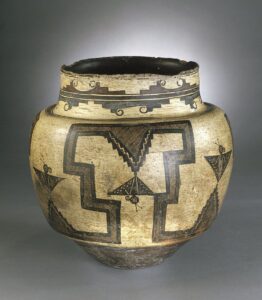
A Zuni vase. Butterflies or bees?
Continued: Question. In landscape symbolism in which quarter {'quatre'?} would the above be represented by - S/W or S/E or somewhere {along?} the 'middle' ground { as with Stonehenge?}.
'In The Middle of Nowhere' {'zero' link?}.
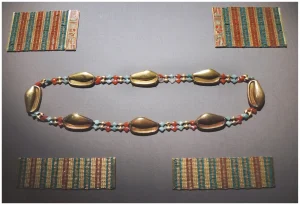
Girdle of 'eight'. Next level up.
"If you say that a place is in the middle of nowhere, you mean that it is a long way from other places. At dusk we pitched camp in the middle of nowhere."
Afar / Abroad to enlarge.
REFRESHER: "The burial chamber included many beautiful objects made of gilded wood, including a portable pavilion, a carrying chair, a bed, several wooden boxes and two armchairs. The wooden artifacts were very well preserved."
'Bishop' to enlarge.
The Zuni (Zuni: A:shiwi; formerly spelled Zuñi) are Native American Pueblo peoples native to the Zuni River valley. The Zuni people today are federally recognized as the Zuni Tribe of the Zuni Reservation, New Mexico, and most live in the Pueblo of Zuni on the Zuni River, a tributary of the Little Colorado River, in western New Mexico, United States. The Pueblo of Zuni is 55 km (34 mi) south of Gallup, New Mexico.[1] The Zuni tribe lived in multi level adobe houses. In addition to the reservation, the tribe owns trust lands in Catron County, New Mexico, and Apache County, Arizona.[2] The Zuni call their homeland Halona Idiwan’a or Middle Place.[3] The word Zuni is believed to derive from the Western Keres language (Acoma) word sɨ̂‧ni, or a cognate thereof.
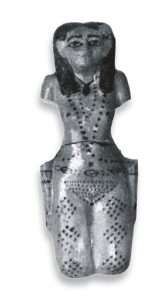
'Diamond / Lozenge' to enlarge.
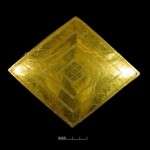
Two 'triangles' within that oblique square. Can u see it? "Bush Barrow" to enlarge.
Side note: "During the Middle Kingdom and Second Intermediate Period, a particular type of figurine representing a naked female began to appear. Modelled in the round and truncated at the knee, they are typically about 15cm long, and are adorned with jewellery and body decorations or tattoos. Their bodies are voluptuously sexual, with small breasts, high waists, flat abdomens, full hips and thighs, rounded buttocks, and often prominently demarcated pubic triangles, which sometimes show the vulvar cleft. Cowrie girdles (particularly related to the human female by their resemblance to the vulva) are often worn. The cowrie persisted as a protective amulet for females from Predynastic times through all of pharaonic Egypt, and its use continues to this day.
Most recently, in 2011, Ellen Morris suggested that the figurines are specifically ‘khener dancers’. She bases her opinion on the fact that many of her reasons to designate ‘paddle dolls’ as khener dancers can also apply to the figurines.
"The word polygon derives from the Greek adjective πολύς (polús) 'much', 'many' and γωνία (gōnía) 'corner' or 'angle'. It has been suggested that γόνυ (gónu) 'knee' may be the origin of gon."
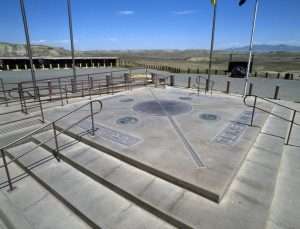
From a different perspective: "Four Corners Monument, marking the only spot in the United States where four states (Arizona, Utah, Colorado, and New Mexico) come together."
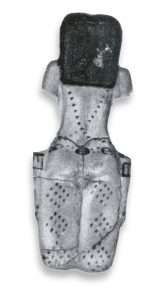 They were both used in the same time period. The so-called ‘paddle dolls’ were not toy dolls either, but they too have been stuck with that early label. It is now clear they were fertility votives associated with Hathor. These votive figures are flat, thin wooden figures of female torsos with small heads, rudimentary arms, and no legs. The bodies have small chests and bloated abdomens. They are painted with jewellery, textile patterns, and often tattoos. The pubic triangle is usually prominently displayed. Strands of mud-bead ‘hair’ were attached to their heads. Their appearance is dramatically different from the figurines. Morris’s arguments for the ‘paddle dolls’ as khener dancers are compelling. However, there are significant reasons to doubt that the truncated figurines are khener dancers, too.
They were both used in the same time period. The so-called ‘paddle dolls’ were not toy dolls either, but they too have been stuck with that early label. It is now clear they were fertility votives associated with Hathor. These votive figures are flat, thin wooden figures of female torsos with small heads, rudimentary arms, and no legs. The bodies have small chests and bloated abdomens. They are painted with jewellery, textile patterns, and often tattoos. The pubic triangle is usually prominently displayed. Strands of mud-bead ‘hair’ were attached to their heads. Their appearance is dramatically different from the figurines. Morris’s arguments for the ‘paddle dolls’ as khener dancers are compelling. However, there are significant reasons to doubt that the truncated figurines are khener dancers, too.
"The burial chamber included many beautiful objects made of gilded wood, including a portable pavilion, a carrying chair, a bed, several wooden boxes and two armchairs. The wooden artifacts were very well preserved."
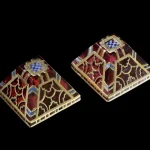
Truncated top of 'pyramid' shape - found at Sutton hoo.

Spirit and Soul - which and why?
Naked female figurines are almost automatically designated as fertility votives by archaeologists, but this is not necessarily true in all cases. Elizabeth Waraksa offered compelling arguments that Pinch Type 2 ‘female fertility figures’ found in the Mut Precinct in South Karnak were used in healing rituals that did not necessarily involve reproduction, or even necessarily involve women.
Side note: "The crown jewel in the collection of the Bush Barrow Burial is the golden diamond lozenge shaped artefact that was probably worn on a cloak. Archaeologists have discovered that the angles of the diamond inscribed on the surface precisely match the angle of the movements of the sun at the summer and winter solstice. They discovered that if you place the diamond in the centre of Stonehenge at the winter solstice you can use it like a compass. If you align one side with the setting sun you can work out where the sun will set during the summer solstice {"eighty one degrees"}. 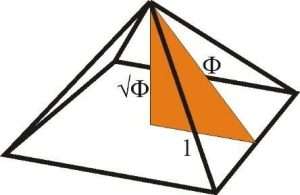 And the zig zag lines around the outside those are laid out to an accuracy of less than half a millimetre. What that means is that they understood geometry and mathematics, accurate measurement 4000 years ago." ['Stonehenge with Dan Snow'].
And the zig zag lines around the outside those are laid out to an accuracy of less than half a millimetre. What that means is that they understood geometry and mathematics, accurate measurement 4000 years ago." ['Stonehenge with Dan Snow'].
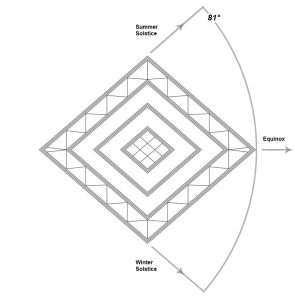
What about North and South?
And/or: "Hundreds of barrows around Stonehenge. Bush Barrow a mound "overlooking Stonehenge" so named because of a small tree just to the side of it. At the bottom was a grave of a tall stout man laid north to south in a crouched position {facing east?}. The golden lozenge suggests a sun worshipper. Maybe to celebrate the solstice." [Same].
The barrow was excavated in 1808 by William Cunnington for Sir Richard Colt Hoare.[2] It contained a male skeleton with a collection of funerary goods that make it "the richest and most significant example of a Bronze Age burial monument not only in the Normanton Group or in association with Stonehenge, but arguably in the whole of Britain".[4] The items date the burial to the early Bronze Age, circa 1900 BC, and include a large 'lozenge'-shaped sheet of gold, a sheet gold belt plate, three bronze daggers, a bronze axe, a stone macehead and bronze rivets, all held by the Wiltshire Museum
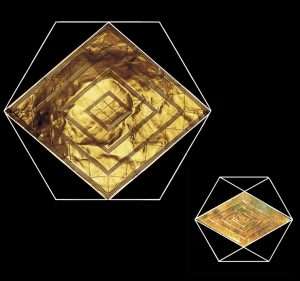
Hexagon geometry was employed in both lozenge forms.
Two of the bronze daggers have the largest blades of any from their period, whilst a third had a 30 centimetres (12 in) long wooden hilt originally decorated with up to 140,000 tiny gold studs forming a herringbone pattern. The studs are around 0.2 millimetres (0.0079 in) wide and 1 millimetre (0.039 in) in length with over a thousand studs embedded in each square centimetre.[19][20] David Dawson has stated that: "The gold studs are remarkable evidence of the skill and craftsmanship of Bronze Age goldsmiths – quite rightly described as 'the work of the gods'".[21] Optician Ronald Rabbetts has said that "Only children and teenagers, and those adults who had become myopic naturally or due to the nature of their work as children, would have been able to create and manufacture such tiny objects."...Scientific analyses indicate that the gold originated from Cornwall.[22] This was also the source of gold used to make the Nebra sky disc and Irish gold lunulae.
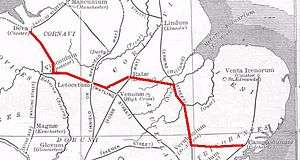
The barrow is one of the "associated sites" in the World Heritage Site covering Stonehenge, Avebury and Associated Sites (Cultural, ID 373, 1986).[3] The Normanton Down round barrow cemetery comprises some 40 barrows strung out along an east-west aligned ridge. Bush Barrow (so named by Cunnington because it had bushes on it) is towards the western end of the line of barrows, sited at the highest point of the ridge.
Continued: They were routinely broken at the conclusion of the ritual. This was standard practice to complete the ritual and prevent its reversal. 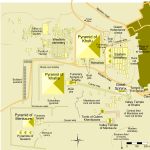 The multiplicity of proposals for the function of the truncated figurines reflects our possession of so few verifiable facts about these intriguing objects. Their dating to the First Intermediate Period and Middle Kingdom is definite. Most came from tombs, but it is critically important that many were found in dwellings in settlements. We know that most of them came from loci where the worship of Hathor was prominent, such as Lisht, Assasif, and Kahun." ['The Past'].
The multiplicity of proposals for the function of the truncated figurines reflects our possession of so few verifiable facts about these intriguing objects. Their dating to the First Intermediate Period and Middle Kingdom is definite. Most came from tombs, but it is critically important that many were found in dwellings in settlements. We know that most of them came from loci where the worship of Hathor was prominent, such as Lisht, Assasif, and Kahun." ['The Past'].
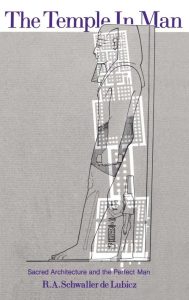
Female aspect behind the knee. Supporting 'against' the knee? No higher than. {'seed' sized?}. Supplication no longer required? Upright link? Magdala / 'buttress' to enlarge.
Refresher: "The burial chamber {Hetepheres} included many beautiful objects made of gilded wood, including a portable pavilion, a carrying chair, a bed, several wooden boxes and two armchairs. The wooden artifacts were very well preserved."
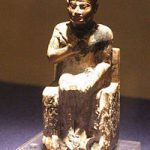
The only one ever found.
Analogy {physical one?}: Or the Christian equivalent of ‘kneeling’, in relation to... wanting to understand a subject, [representational of]. Khufu is seen with one hand ‘on heart’...Only one hand on knee. As opposed to the other two, who are seen to be seated. [ ‘Throne’ symbolism ]. With both hands on both knees. One Palm inward,[left]. Representing...an awareness now made and especially understood through ’Supplication’, i.e., Hands on top of knees. Higher over lower, i.e., Hands belong to upper part. Knees to lower part. Thinking cap time.
REFRESHER: "A seed sized portion of the inner stone of spiritual effort will transform enormous amounts of the leaden inertia we all encounter in our own souls." ['The Zelator'].
Emerald 'Tablet'?
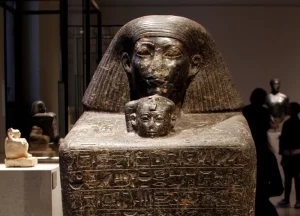
Squatting comes from the Old French esquatir/escatir, meaning to "compress/press down". The weight-lifting sense of squatting is from 1954. Full squatting involves resting one's weight on the feet with the buttocks resting on the backs of the calves/heel. It may be used as a posture for resting or working at ground level particularly where the ground is too dirty or wet to sit or kneel.[1]
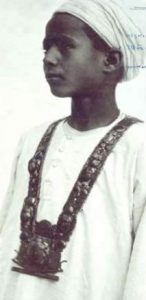
Hussein Abdul Rasoul - 'The 'Water-Boy' - whose 'heel' found the first step of 'sixteen' that led to the tomb of the 'golden child'.
Sturdy knees bear the brunt of our infant crawling; scuffed knees are the medallions of childhood’s exuberance. At any age we revert to the stable crawling posture of hands and knees because of injury, stealth or confining spaces. Even before we have exercised our own knees, we know the knees that comprise the hinge of a supporting lap. The unusual image of King Akhenaten and a young woman, perhaps his queen or daughter, illustrates how intimately one lap fits into another, a nesting enabled by the articulation of the knees. But the ancients also classed the fluid in the knee with cerebrospinal fluid, and considered it the sap of life, synonymous with offspring. Thus knees were seen as the seat of paternity and generation, vitality and strength. The Latin genus, “birth,” is cognate with the English “knee” (ibid.). More than any other part of the body, we depend on the knees to raise or lower ourselves. Knees are the joints most at odds with gravity, and the focal point of leverage and balance, helping to support the body and its burdens....
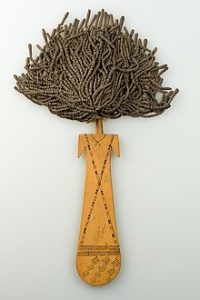
Paddle Doll {back}.
The knee’s connection with the life force is probably implicated in the symbolism of kneeling: We submit our own life force to something greater, or, as a suppliant, appeal to the life-soul of another whose knees we grasp....
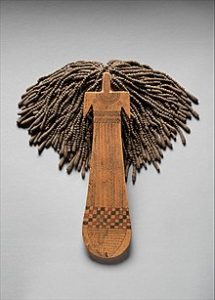
Paddle dolls are made of thin pieces of wood which depict the torso of a woman with truncated arms and no legs. Thick "hair" is represented by small beads strung along string, which are often made from black mud.
One genuflects or “bends the knee” before the numinous or sacred or in obeisance to the powerful. Pilgrims crawl on their knees toward a holy shrine. The vanquished is reduced to his knees by the victor. We kneel to make declarations of love. Knees are also vulnerable. The kneecap or patella is a marvelous shield, but a sensitive one, and subject to a great deal of wear and tear. Knee injuries are extremely painful. Gangsters are known to break knees as a warning, perhaps “this time the life force, next time the life.” At the opposite pole, knees secure the triangular lotus position of Buddhism and Hinduism, emblematic of axial balance, stability and sustaining the closed circuit of the energy field through which the subtle body centers of the chakras are vitalized." ['The Book of Symbols' / Taschen].
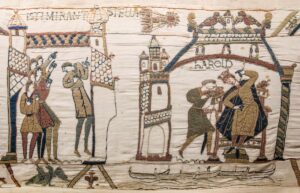 Side note: The word comet derives from kometes, a Greek word meaning “the long-haired,” referring to the comet’s hairlike tail. In the Iliad, Achilles connects this feature with the comet’s supposed malevolence, “Like the red star from his flaming hair / Shakes down disease, pestilence and war”. And when Electra saw Troy going up in flames, she was said to have torn her hair out with grief, and was then placed by the gods among the stars as a comet.....
Side note: The word comet derives from kometes, a Greek word meaning “the long-haired,” referring to the comet’s hairlike tail. In the Iliad, Achilles connects this feature with the comet’s supposed malevolence, “Like the red star from his flaming hair / Shakes down disease, pestilence and war”. And when Electra saw Troy going up in flames, she was said to have torn her hair out with grief, and was then placed by the gods among the stars as a comet.....
In Greek mythology, Electra (/ɪˈlɛktrə/; Greek: Ἠλέκτρα 'amber'[1]) was one of the Pleiades, the seven daughters of Atlas and Pleione. She lived on the island of Samothrace. She had two sons, Dardanus and Iasion (or Eetion), by Zeus.[2]

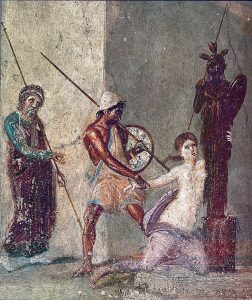
More details
Ajax the Lesser drags Cassandra from the Palladium. Detail from a Roman fresco in the atrium of the Casa del Menandro (I 10, 4) in Pompeii.
Electra was connected with the legend of the Palladium, the sacred statue, which became the talismanic protector of Troy. Electra, along with the rest of the Pleiades, were transformed into stars by Zeus. By some accounts she was the one star among seven of the constellation not easily seen because, since she could not bear to look upon the destruction of Troy, she hid her eyes, or turned away; or in her grief, she abandoned her sisters and became a comet.[3]
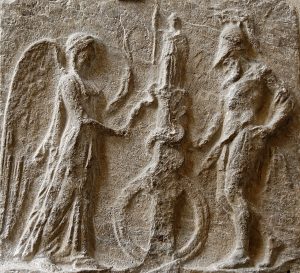
Nike (Victory) offers an egg to a snake entwined around a column {'pedestal'?} - surmounted by the Trojan Palladium. (Marble bas relief, Roman copy of the late 1st century AD. After a neo-Attic original of the Hellenistic era.)
And/or: The Trojan Palladium was said to be a wooden image of Pallas (whom the Greeks identified with Athena and the Romans with Minerva) and to have fallen from heaven in answer to the prayer of Ilus, the founder of Troy.
"The most ancient talismanic effigies of Athena", Ruck and Staples report, "were magical found objects, faceless pillars of Earth in the old manner, before the Goddess was anthropomorphized and given form through the intervention of human intellectual meddling."[4]
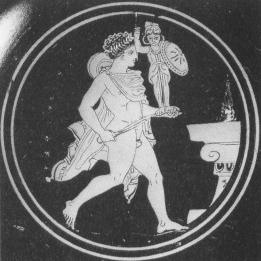
Diomedes with the Palladium approaches an altar.
The arrival at Troy of the Palladium, fashioned by Athena[5] in remorse for the death of Pallas,[6] as part of the city's founding myth, was variously referred to by Greeks, from the seventh century BC onwards. The Palladium was linked to the Samothrace mysteries through the pre-Olympian figure of Elektra, mother of Dardanus, progenitor of the Trojan royal line, and of Iasion, founder of the Samothrace mysteries.[7] Whether Elektra had come to Athena's shrine of the Palladium as a pregnant suppliant and a god cast it into the territory of Ilium, because it had been profaned by the hands of a woman who was not a virgin,[8] or whether Elektra carried it herself[9] or whether it was given directly to Dardanus[10] vary in sources and scholia. In Ilion, King Ilus was blinded for touching the image to preserve it from a burning temple.[11]
........................................................
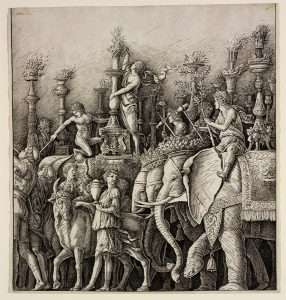
'light oxen': "I bring up an individual type as a point of departure to talk about. The one {'emotion'?} that is strongest will pull you first." [Page 4 'Stopping and Seeing' / Translated by T. Cleary].
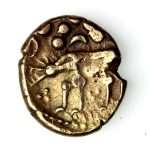
Hair-raising.
Continued: High up in the branches of a tree silhouetted against an evening sky glows a slender arc of light, the crescent of the new moon. A modern image, it is rooted, perhaps, in the ancient symbol of the Sumerian moon tree, “the house of the mighty mother who passes across the sky” (Harding, 48). Like the horns of a white cow, the crescent moon curves delicately around space that is black and hollow, yet fecund with the promise of light to come as the moon swells into fullness. The erescent’s boatlike shape conjures Babylonian Ishtar, the “Ship of Life” who bears the seeds of all living things (Jung, 370). It is Byzantium’s Io and her daughter Keroessa, “the horned” (ERE 12: 145). It evokes the maiden aspect of the Greek triple-headed moon goddess, the breathtaking beauty and potency of the kore: Athena, Persephone, Artemis, “goddess of the night, glory of the stars,” who holds a crescent moon or wears one in her hair {'tiara'?}. So, too, does the Christian Madonna rest her feet on the crescent moon, a paradoxical image of chaste virgin and vessel of divine birth....

The relief faces east. It was created on two large boulders of pink granite in the open air giving the whole a natural effect.[12] The boulders measure 15 by 30 metres (49 ft × 98 ft). Many of the figures carved are life size. The natural cleft, a very large perpendicular fissure, is skillfully sculptured. It is in between the two boulders and is integral to the mythical narratives carved on the entire relief. A water tank was once located at the top of the rock to release water denoting the Ganges River. It cascaded over the cleft and the relief to give the impression of the Ganga descending from the head tied dreads of Shiva. This scene was created during festive occasions and the presence of a brick masonry cistern at the top of the cleft to release water attests to its location at the site. The relief is an ensemble of over a hundred figures (146 is also mentioned) of gods, people, half-humans and animals.[4][5][13][14][15]
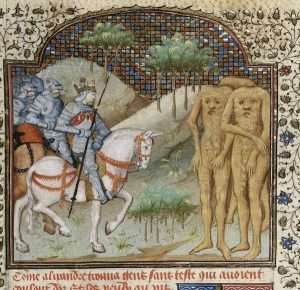
From the west? Facing east?
came to earth as river. The rivers diverged into four in Paradise and into seven in ancient India ... waters of life flowing from the source into the world need to multiply. The Ganges, the holiest of the three holy rivers in India, flows from Vishnu’s toe through heaven, earth and the world below. Once upon a time the Holy river of Ganga wound round Mount Meru three times in the city of Brahma. Then one day Bhagiratha prayed for the river Ganga to descend from the highest abode of the gods to earth and beyond to the depths that they may reach and revive the 60,000 Sagaras, his ancestors, whose ashes lay in the underworld. His prayers were answered, but the might of the holy waters was far too much for the earth to withstand, so Shiva offered his matted hair to catch the river in her descent so that her landing might be softened for humankind. She emerged from Shiva’s hair in seven streams, one of which is the Ganges. In the underworld, the waters cascaded and flowed over the ashes of the 60,000, at which point their souls rose to the heavens. Over a million Hindus journey to Varanasi, where the three holiest streams meet, each year to bathe in her waters, cleansing themselves of the karma of previous lives, and assuring an auspicious rebirth. The waters of the river can promise rebirth, as the River Jordan was a baptism of souls into a new life in spirit. “Shall we gather at the river?”...
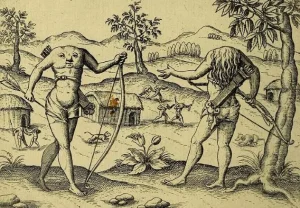
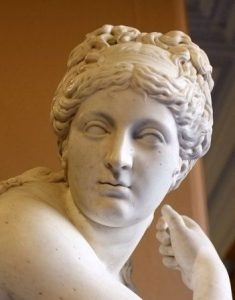
Aphrodite. Bald patch? 'Squared' not 'ringed'?
Unadorned and disregarded by its owner, Mary Magdalene’s flowing hair veils the chaste body of the penitent sinner, and at the same time conveys the faded heat of the former prostitute. Red hair, belonging to only two to four percent of the world’s population, has signified erotic ardor and sexual looseness, fiery, typhonic temperament, Mars-like anger and the uncanniness of witch and devil. The red-haired Virgin Queen, Elizabeth I, made it for a time fashionable; the Inquisition viewed red hair as alien and suspect. Hair is incredibly potent. Its root follicles, fed by tiny blood vessels, lie invisibly under the skin, associating hair with interior, involuntary fantasies, thoughts and longings. Hair tells us something about the state one’s “head” is in. Dirty, lice-ridden, unkempt locks have signified derangement, but also ascetical retreat and disregard of the worldly and bodily. The quiet curls of Buddha suggest enlightened tranquility. Apollo is depicted with classically ordered sunlike locks of gold.....Dionysus with hair dark, chaotic, tangled like wild grapevines. Harry Potter’s black, unruly hair signifies unconventional ideas and magical powers. Hair carries DNA and thus codes race, ethnicity and gender, but the cut or characteristics of a head of hair can also reveal individuality or conformity, freedom or inhibition, even religion, profession, political persuasion and the idols or trendsetters with whom a person identifies. The vitality of hair is stunning. Because the cells in each strand are no longer alive once the hair surfaces, cutting hair doesn’t hurt, and strands that eventually fall out are constantly replaced by others, giving us on average about 100,000 in all. Hair seems to have a life of its own; like fingernails, it continues to grow after death, and ancient, fossilized human bodies with heads of hair have a spooky aliveness. ['Book of Symbols'].

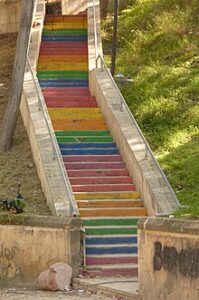
Rainbow_steps_in_Kyrenia. Kyrenia[a] is a city on the northern coast of Cyprus, noted for its historic harbour and castle. It is under the de facto control of Northern Cyprus.
While there is evidence showing that the wider region of Kyrenia has been populated before, the city was built by the Greeks named Achaeans from the Peloponnese after the Trojan War (1300 BC). According to Greek mythology, Kyrenia was founded by the Achaeans Cepheus and Praxandrus who ended up there after the Trojan War. The heroes gave to the new city the name of their city of Kyrenia located in Achaia, Greece.
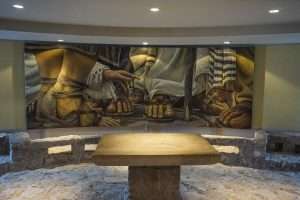
Big or little toe?
Continued: ''The outline of the human skeleton was superimposed on the general plan of the temple {i.e., at Karnac}. The head is located in the 'covered sanctuary' {veil?}. The sanctuary of the barque of Amun is in the oral cavity; the clavicles are marked by walls; the chest is located in the first hypostyle of the covered temple and ends with the temple's platform. The abdomen within the peristyle court....The colonnade to the femurs, and the thighs and knees are at the site of the gate in front of which sit the two colossi whose legs are pronounced. The little toe to the N/W angle of the pylon.'' [Page 23/4 'The Temple In Man'].
'By endurance we conquer'. Ernest Shackleton. Try 'Struggle''.
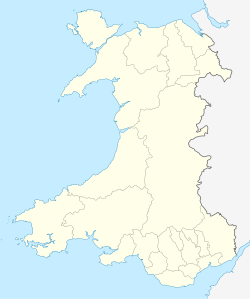
''This early castle was built on a peninsula, bounded by the River Seiont and the Menai Strait; it would have been a motte and bailey....Caernarfon Castle (Welsh: Castell Caernarfon Welsh pronunciation: [kastɛɬ kaɨrˈnarvɔn]) is a medieval fortress in Gwynedd, north-west Wales. The first fortification on the site was a motte-and-bailey castle built in the late 11th century, which King Edward I of England began to replace with the current stone structure in 1283.... The castle was born out of bitter war with Welsh princes. So of course its immense curtain walls and daunting King’s Gate were designed to withstand assault. But the polygonal towers, eagle statues and multi-coloured masonry sent a more subtle message. These echoed imperial Roman architecture, especially the walls of Constantinople. They also recalled the Welsh myth of Macsen Wledig, who dreamed of a great fort at the mouth of a river – ‘the fairest that man ever saw’....So Caernarfon is a castle of dreams. A legend brought to life. Even after 700 years it still stirs the imagination like no other Welsh castle.'' 'Enchant' to enlarge.
And/or: ''In architecture, an atrium (PL: atria or atriums)[1] is a large open-air or skylight-covered space surrounded by a building.[2] Atria were a common feature in Ancient Roman dwellings, providing light and ventilation to the interior. Modern atria, as developed in the late 19th and 20th centuries, are often several stories high, with a glazed roof or large windows, and often located immediately beyond a building's main entrance doors (in the lobby). Atria are a popular design feature because they give their buildings a "feeling of space and light."[3] The atrium has become a key feature of many buildings in recent years.[4] Atria are popular with building users, building designers and building developers. Users like atria because they create a dynamic and stimulating interior that provides shelter from the external environment while maintaining a visual link with that environment. Designers enjoy the opportunity to create new types of spaces in buildings, and developers see atria as prestigious amenities that can increase commercial value and appeal.....The atrium (Latin: ātrium, lit. 'entry hall'; PL: atria) is one of the two upper chambers in the heart that receives blood from the circulatory system. The blood in the atria is pumped into the heart ventricles through the atrioventricular mitral and tricuspid heart valves.''
'Climbing Great Buildings: Lloyds Building' / BBC4.
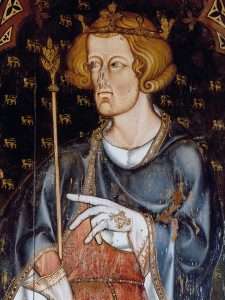
West? .......''Caernarfon Castle (alternatively the English spelling is Caernarvon) is one of a number of the castles that Edward I had built in Wales, as part of his so called ring of iron.''
''The first fortifications at Caernarfon were built by the Romans. Their fort, which they named Segontium, is on the outskirts of the modern town.[4] The fort sat near the bank of the River Seiont; the fort was probably built here due to the sheltered position and because it could be resupplied via the river Seiont.[5] Caernarfon derives its name from the Roman fortifications. In Welsh, the place was called y gaer (lenition of caer) yn Arfon, meaning 'the stronghold in the land over against Môn'; Môn is the Welsh name for Anglesey.[4] Little is known about the fate of Segontium and its associated civilian settlement after the Romans departed from Britain in the early 5th century....
The master mason responsible for the design and construction of the castle was probably James of Saint George, an experienced architect and military engineer who played an important role in building the Edwardian castles in Wales.[11] According to the Flores Historiarum, during the construction of the castle and planned town, the body of the Roman emperor Magnus Maximus was discovered, and Edward I ordered its reburial in a local church.[12]
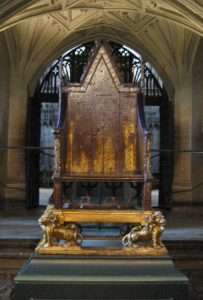
''According to tradition, Edward II was born at Caernarfon on 'twentyfive' April 1284.[14][16] Edward was created Prince of Wales in 1301, with control over Wales and its incomes. Since then the title has traditionally been held by the eldest son of the monarch {'Djedefre?}. According to a famous legend, the king had promised the Welsh that he would name "a prince born in Wales, who did not speak a word of English" and then produced his infant son to their surprise; but the story may well be apocryphal, as it can only be traced to the 16th century.''
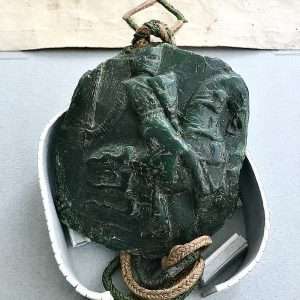
Seal.
The construction of the new stone castle was part of a programme of building which transformed Caernarfon; town walls were added, connected to the castle, and a new quay was built. The earliest reference to building at Caernarfon dates from 'twentyfour' June 1283, when a ditch had been dug separating the site of the castle from the town to the north. A bretagium, a type of stockade, was created around the site to protect it while the permanent defences were under construction. Timber was shipped from as far away as Liverpool.[10] Stone was quarried from nearby places, such as from Anglesey and around the town.[13] A force of hundreds worked on the excavation of the moat and digging the foundations for the castle. As the site expanded, it began to encroach on the town; houses were cleared to allow the construction. Residents were not paid compensation until three years later. While the foundations for the stone walls were being created, timber-framed apartments were built for Edward I and Eleanor of Castile, his queen. They arrived at Caernarfon on either 11 or 12 July 1283 and stayed for over a month....''

Side note: ''But on the fourth Way knowledge is still more exact and perfect.....It must be noted that in addition to the legitimate ways, there are also artificial ways which give temporary results only....It also happens that the door to the fourth room is opened artificially with a skeleton key. And in both these cases the room may prove to be empty.'' [Pages 1069/1076 {Kindle} 'In Search of the Miraculous' / P.D. Ouspensky].
Refresher: ''Where good deeds are ships on which to ride the waves."
Lloyds Building?
'The highs don't last forever, but then neither do the lows'.
Side note: "The Pictish 'crown' descended in the 'female' line. Here the oculus {'eye'} survives strongly on the bows of boats." [Page 126 of the book by T. Lethbridge].

Penistasche?
More ‘adept’ than ‘apprentice’. A link to an interest in something. That over time; as with any interest; may develope into a greater interest. Represented in esoteric circles; with the word ‘Love', [ Sufi lore especially...and especially so...in relation to the understanding of the ‘divine’ bit and its relationship / relevance to each individuals ‘overall journey’ ]. Represented with that universal ‘love’ symbol. The heart. Or for a more practical example. Mr Brian Cox and his quote in relation to his own subject of interest. Physics..."Its hard but beautiful", ...unless of course, Mr Cox is referring to his obsession with 'helicopters'. He is a "chopper obsessive", is he not.
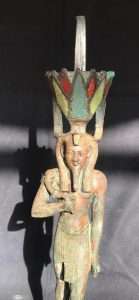
The word ''beauty'' in relation to Nefertum and/or Nefertiti. Opposite ends on the same pole?
''He { YHWH?} hath made everything beautiful in his time." [Eccles.iii.11].
"The good, of course, is always beautiful, and the beautiful never lacks proportion." Plato.
Try ''logos'' to DEFINE its true meaning not only to subject material but to the world at large.
''Yes or no'' ?
From a different perspective: {future one?}: "The Rose of the World will teach the absolute value of individuals and their divine birthrights: the right to be free from the yoke of poverty and the oppression of power-hungry groups, the right to well being, the right to all forms of free creative work and the public unveiling of the 'fruits of that work'. The right of religious searchings, and the right to beauty...Humanities gifts will be put to a different use, dictated by the thirst for knowledge, a love for all living beings, a need for all forms of higher creative work - and a passion for beauty." [Pages 38-41 'The Rose of the World' / D. Andreev].
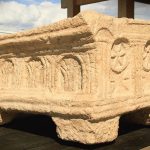
Rose or flower?
Refresher: "Gnosis illuminates the deepest substratum of self. Walk the road to the land of shadows. There dwells the secret knowledge of the soul. One cannot free oneself by bowing to the yoke - only by breaking it. Be a breaker of yokes, not a digger of furrows." [Page 11 'The Deeper Teachings of Merlyn' / D. Monroe].
Analogy of same...Virgil in relation to 'intellect' {verses?} Beatrice in relation to 'intuition' of a {'higher' order?}, i.e.,eureka moments that take one into {higher?} realms/domains/altered states of 'knowledge' - regardless of subject. REPRESENTATIONAL OF. And/or PROCESS OF.
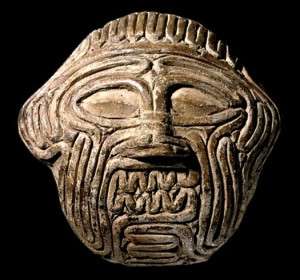
Hawawa. The guardian of the forest. Question. Why is the face drawn in such a form. Wrinkles? {Labyrinth?}. That link to Gog and Magog and finally [ a 'stage' further on] to the ''Guardian of the Gate.'' As a representation of something. Surah eighteen [translated by Yusuf Ali ] gives information on all the above. Clue. Lord of East and West [of which the figure of Alexander is only one possibility].
The word 'Beatitude' and its underlying meaning, another example. Explained elsewhere. ‘Heart’ being one of those archetypes / keys. Hence the link to the Egyptian "weighing of the heart". Something that was once 'gross', [Alchemy, use of], has the potential [through, ''understanding''],to become 'less gross'. Hebrew equivalent = 'unhewn', i.e.....
"There are two types of 'altar' mentioned in Scripture, namely, altars of sacrifice, and altars of witness. In the case of 'altars' of sacrifice strict commands were given that such were to be made of earth or stone, but if stone was used, it must be unhewn....no tool must be used...."for if thou lift up thy tool upon it, thou has 'polluted' it" [Exodus 20:24-25]. But in the case of altars of witness that were not for sacrifice no such instructions were issued. The altar of Isaiah 19:19-20 is clearly stated to be an altar of witness: "it shall be a sign and for a witness unto the lord"; hence there is nothing to prevent it being built of hewn stone". [ Book one, chapter three, 'Pyramidology', by A. Rutherford].
''Who but I can unfold the secrets of the unhewn Dolmen?'' {Song of Amergin}. Coincidence?
"The symbol of the 'lower' will is the altar".
A work in progress: ''While Mary's life was unique and her role as the FIRST RECORDED WITNESS cannot be repeated, much of 'her' experience can be OUR OWN. In ancient Magdala, we are invited to enter into the mystery of god's love.'' [Page 121 'Mary Magdalene: Insights from Ancient Magdala' / J. Ristine].
Question. What represents 'higher'?
Question 2. Why bother at all?
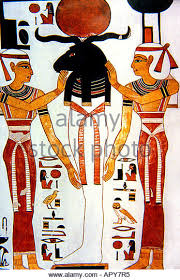
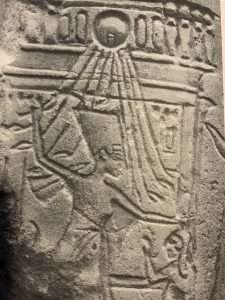
Nefertiti 'smiting' her enemies. Laconian key?
''When it comes to the encounter between the 'risen' Jesus and Mary, John seemed to have a deeper insight than his fellow evangelists. The prior encounter with the two - in which 'he cast out her seven demons after being crippled by them for eighteen years' - transformed Mary into a faithful follower, bringing her to the foot of the cross. Now her BEING FOR JESUS is rewarded as she becomes the first witness in the GARDEN - with echoes of the Song of Songs: a lover searches for her beloved...'' [Page 129, same book].
Question. What does 7 / 18 represent?
Side note: Mary also associated with ''alabaster jars''.

From a different perspective {an ancient one}: ''For in the 12th Dynasty the Man Weary of Life speaks of the time: 'when i strive for death before it has come to me, and when i cast myself into the 'fire' in order to burn myself up' The fertility THEME is introduced by the story of HER under the name Rhodopis, for she was said to be a courtesan....
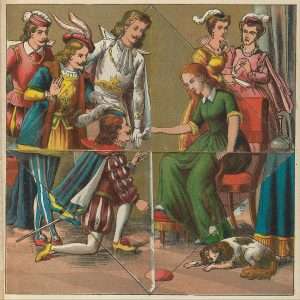
'Lozenge'?
Eratosthenes remarks: that 'she is Athene Nicephorus' i.e., a divinity who brings victory - that her death by fire was a sacrifice OR an apotheosis.'' [Extract from Pages 43-46 'The Sky-Religion in Egypt']. Recall the 'daughters' of Khufu - as one example.
'Nike' to enlarge.
Question. Soul over spirit or a balance of the two?
A side step: "In one story this process of increasing limitation is envisioned as a cosmic cow standing with each leg in one quarter of the world; with each age that passes a leg is lost, resulting in the absurd and unstable world we live in today - a cow balancing on one leg. According to the information in the Laws of Manu, the morning and twilight periods between the dawn of each new era equal one tenth of there associated yuga..." [from the book by J. Jenkins].
''Who calls the Cattle from the House of Tethra?''
''On whom do the Cattle of Tethra smile?'' {Song of Amergin}.
Try ''cattle'' to make a connection. Question. 'Spirit' or 'soul'? As a means....?
Egyptian equivalent: "...the UNfired brick mastabas with facades composed of recesses and projections, characteristic of the First Dynasty, discovered at Saqqara not far from the pyramid of Zoser." [Extract from the book by L. Lamy].
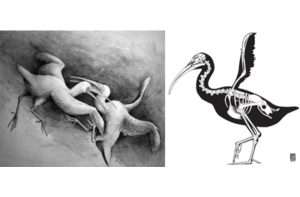
Xenicibis is a large, extinct, flightless ibis. It was discovered by Storrs Olson from the Smithsonian Institution, who found some partial remains in a Jamaican cave in 1977. When Olson eventually saw the bird’s wing bones, he was baffled. They were so “utterly strange” that he thought the animal must have been suffering from some inexplicable disease.
Since then, Olson has found more remains including an almost complete skeleton. Now, he and his partner Nicholas Longrich from Yale University, have a very different view of the wing. They think it was a club. Weapons like clubs and bats have large weighted ends to deliver heavy impacts, and long handles to increase the speed of the swing. That’s exactly what you see in Xenicibis’s wing.
Saqqara - near the apex of the Nile Delta - ''UNfired'' therefore; a representation of something associated with it. Question. What? Question 2. What would 'fired' be represented with?
Clue. What does the Step Pyramid represent?
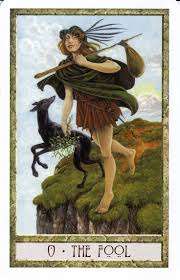
Question. Is the 'dog' following or leading? All as a means...? Heliacal rising?
Side note: The author of 'Imhotep the African' asks the question ''So who was Horus before he became the Son of Osiris''. Speculates just on one line within the Pyramid Texts - 'Horus who is in the Spdt'' all in relation to the constellations {Homer?} of Orion and Canis Major.
Try ''Horus in/of the horizon'' and ''bosom'' to 'see' something beyond ''Sothic Cycles'' and therefore Zep tepi {'first time'}.
To understand 'first time' try ''foundations''. All as a means...?
Side note 2: Underneath within a labyrinth of tunnels found mummified Ibis birds and Baboons. A shaft {Osiris shaft?} finally found. At its base a wooden coffin within the large Granite one. What does it all represent?
Clue. 'Baboon' = the ''dawning'' of something. REPRESENTED with the sun.
Wood - henge - Stone - henge?
Side note: Ibis bird {with hooked beak} found in the caves {13000 years ago} of Sheffield.
Question. Is the bird native to Sheffield? Try ''hooked'' for something further. And/or ''N. Oliver''.

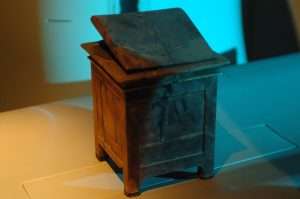
Solitary 'tooth' {and liver} found in a 'square' altar type box belonging to Hatshepsut.
Indian {counter culture? i.e.,from a different perspective, i.e., 'turned around on its head'?} - "When the Bose institute was opened, i attended the dedicatory services. Enthusiastic hundreds strolled over the premises. I was charmed with the artistry and spiritual symbolism of the new home of science. Its front gate is a centuried relic from a distant shrine. Behind a lotus pool, a sculptured female figure with a torch conveys the Indian respect for women as the immortal light bearer. A small temple in a garden is consecrated to the Noumenon beyond phenomena. Thought of the divine incorporeity is suggested by the absence of any altar image." [Extract from the book 'Autobiography of a Yogi'. Chapter Eight]. Soul as opposed to 'fire' {spirit}.
'Shadow' in relation to light [anima?]. UNhewn / hewn? {and/or sarsen / blue stones?}. S/W in relation to S/E?
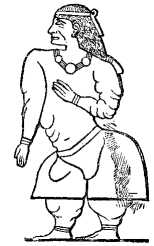
'Fat' of the land? Question. What would come next?
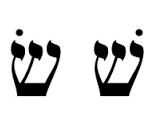 A work in progress: ''When I saw the tooth in the box I asked Dr. Ashraf Selim to bring in a dentist right away. The dentist was a professor from Cairo University, Dr. Galal El-Beheri. He began to study the tooth, and we went back to the CT scans of all six of the unidentified female mummies, to see if any one of them was missing a tooth. Not only was the fat lady from KV60 missing a tooth, but the hole left behind and the type of tooth that was missing was an exact match for the loose one in the box from DB320! We therefore have scientific proof that this is the mummy of Queen Hatshepsut.''
A work in progress: ''When I saw the tooth in the box I asked Dr. Ashraf Selim to bring in a dentist right away. The dentist was a professor from Cairo University, Dr. Galal El-Beheri. He began to study the tooth, and we went back to the CT scans of all six of the unidentified female mummies, to see if any one of them was missing a tooth. Not only was the fat lady from KV60 missing a tooth, but the hole left behind and the type of tooth that was missing was an exact match for the loose one in the box from DB320! We therefore have scientific proof that this is the mummy of Queen Hatshepsut.''
Side note: A ''duality'' exercise: She Who Loves Silence' in relation to:

Fake news: Self-serving: Big cup tiny dick? TZAR or team player?
''In Greek myth, Narcissus fell in love with his own reflection while looking into a POOL.''
Continued: "The rough cubic stone is the symbol of the beginning of the material creation. The polished stone is the symbol of the work [in progress. This readers input]...on the path of return." [Extract taken from the book by J. Dubuis]. Put ''cube'' in the box.
Question. What was found in the subterreanean chamber of the Gt. Pyramid?
Pagan equivalent, 'giants' within the landscape, in relation to learning something, from a 'wild-man' start. [i.e., 'lower']. Sumerian equivalent = Enkidu, in relation to Gilgamesh, i.e.,..."One day at a watering hole used by gazelles, this trapper [hunter] saw a strange, wild, hairy man, and he watched as this ape - like creature drank then ambled off in the company of the gazelles". [Chapter 15, 'The Sacred History'].

Oleg Penkovsky. The real Russian hero. Selfless. R.I.P.

The common touch: ''A Tzar should conduct himself as a Tzar - but that i do not know how to do.'' R.I.P.
Together with..."And Enkidu is the strong hairy wild man who endured a trial of 'strength' against Gilgamesh and became his 'companion' after their wrestling match". .......That is now through an awareness, less 'gross'. "Enlightened". Hence the same link to Jacob [Old Testament] |"he who wrestled with god", from which he became 'Israel'. "He who struggles [key] with god".
Common parlance...to 'wrestle' or 'submit' to ones own conscious',[and/or ''higher self''] i.e.,relative to lower / higher. Understanding that simple sentence defines both the Hebrew and Muslim religions, i.e.,to wrestle or submit to ones 'higher' self. Benefit of. It also defines the true meaning of the word ''teacher'' of the Essenes. Proving the viability of the subject and its possible relevance to each individual. As it does with...
...'Mighty conch's' blown on ''the holy plain, on the field of Kuru'', who were ''gathered together eager for battle''. [ 'First Discourse' of the book 'The Bhagavad Gita' {The Lord's Song, i.e.,higher over lower or at least; with that potential 'in sight'}.
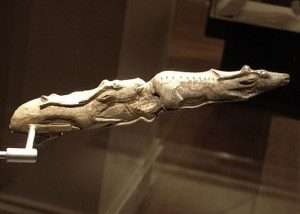
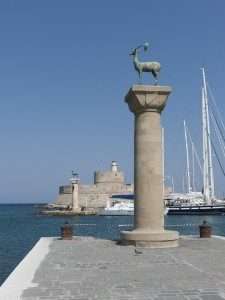
Stag and deer.
Understanding the 'hidden' meaning behind such words [KEYS] as 'gazelle' in relation to other associated words such as 'small', 'swift', 'horned' and especially there ability to 'leap', all in relation to a 'water' hole,[ and in the Egyptian case, 'its' association with the desert / 'wilderness'] gives clues not only as to its intended purpose with the reader in mind, but also as to why each animal is a representation of certain 'aspects'. Within those positive and negative parameters, [in relation to the 'Gilgamesh' story].

“Most certainly, I tell you, one who doesn’t enter by the door into the sheep fold, but climbs up some other way, is a thief and a robber." 'Wanderer' to enlarge.
Another example of same could be the cave art of same, as found in the South West 'corner' of Egypt's ancient boundaries, as speculated upon in the book, 'Black Genesis'. As a 'further' head scratcher....Why is a 'robber' or 'thief' [ Valmiki] selected to tell the story of Rama. The 'hero' of the archaic Indian civilization. Or 'milk maids' in relation to the Krishna story. Or a 'trapper' [hunter] relative to Gilgamesh and 'Enkidu'? Or Perceval raised to be a 'forester'. [Full details of each, will be found in such works as 'The Sacred History']. Clue. A representation of something, outside of the obvious.
"...Gone was the sorrow of parting. The pity and grief for his death, long robber of my peace, now fled in stark shame. [Extract from the book 'Autobiography of a Yogi' . Enlarged elsewhere].
"...that the thief is richer than the one who is robbed." ['Wisdom of the 4th Way'].

Dresden {Saxony} Germany. Rooster on top. Rooster also on top of Notra Dame roof. 'Forest of oaks'.
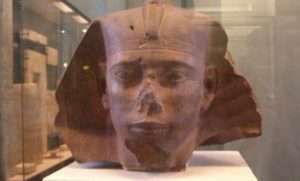
He is the king who introduced the royal title Sa-Rê (meaning “Son of Ra”) and the first to connect his cartouche name with the sun god Ra.
Side note: Rama and companions, spent almost 13 years in exile, and last year remained. Both Rama and Aayodhya's citizen were waiting for his return. One day, Shurpanakha, a demoness and the sister of the demon king Ravana, encountering Rama and Lakshmana during their exile in the forest. She is enamored by Rama's appearance and attempts to seduce him. However, Rama, who is devoted to his wife Sita, rejects her advances. Enraged and humiliated, Shurpanakha turns her attention to Lakshmana. But Lakshmana also rejects her, prompting her to attack Sita in a fit of jealousy. In retaliation, Lakshmana swiftly intervenes and mutilates Shurpanakha by cutting off her nose and ears.
Horrified and in pain, Shurpanakha flees to her brother Khara and Dushana She narrates her ordeal to Khara and Dushana. This sets the stage for the major events of the Ramayana, including Ravana's abduction of Sita, Rama's quest to rescue her, and the ensuing battle between Rama and Ravana.
The episode of Shurpanakha serves as a catalyst for the larger conflict in the Ramayana and highlights themes of jealousy, revenge, and the consequences of desire. It also underscores the complexity of characters and their motivations within the epic narrative.
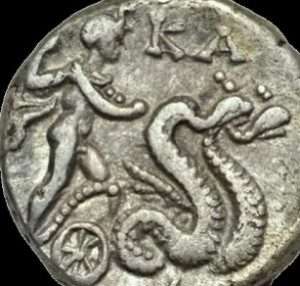
Krishna = driver = Charioteer? What about the chariot? Horses?{page 175}.
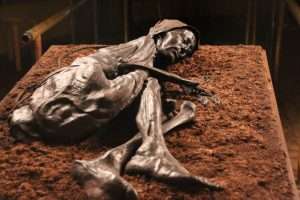
Bog = fen = 'altar'?
And/or: "It is useless for me to review the foundation of the Universal Empire by that extraordinary man whose glory filled the universe under the name of Rama, the Ram; Scander of the two horns; Osiris, chief of men; Dionysus, the divine intelligence; Giam-shyd the dominator of the Universe, etc. I have said almost all that I could say, without falling into details foreign to this work. But let us notice again that it is only in admitting the existence of this empire that one can account for a multitude of usages common to all the peoples; as, for example, giving a crown to the king, and a mitre to the pontiff; of elevating their thrones a certain number of degrees and of placing a sceptre in the hand of the one, and a pastoral crook in the hand of the other. The certain form of the altars, the manner of prostrating oneself while invoking the Divinity, all bespeaks a universal rite whose impress is not effaced through the infinite variations which the cults have undergone." ['Hermetic Interpretation of the Social State of Man' / F. d'Oliver].
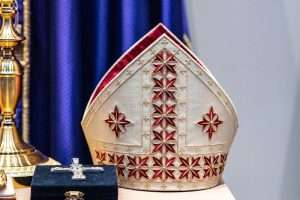
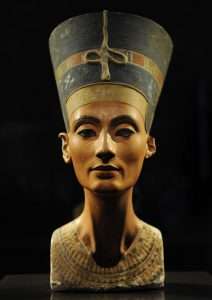
Higher or lower?
And/or: These two horns have since been singularly celebrated. They were put upon the head of all theocratic personages. They gave the form of the tiara and the mitre. Finally it is noteworthy that the last of the Scanders, Alexander the Great, bore the name by which these ancient heroes had been designated.*
In the sacred books of the Hindus, called Pouranas, the greatest details touching the conquests of Rama are found. These conquests extended over all the inhabited earth. As it does not seem possible that the life of a single man may have been sufficient for so many events, it is probable that, according to the manner of writing history at this remote epoch, the first founder of the cult was credited with all that was done by his lieutenants or his successors. However that may be, one finds in these books, that Rama, under the name of Deva-nashousha,? the Divine Spirit, after securing the sacred island of Lanka, returned to the septentrional countries of Asia and took possession of them. {same}.
Delos or Crete?

Boats = west. Horses east?
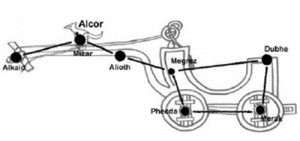 Septentrional, meaning "of the north", is a Latinate adjective sometimes used in English. It is a form of the Latin noun septentriones, which refers to the seven stars of the Plough (Big Dipper), occasionally called the Septentrion.
Septentrional, meaning "of the north", is a Latinate adjective sometimes used in English. It is a form of the Latin noun septentriones, which refers to the seven stars of the Plough (Big Dipper), occasionally called the Septentrion.
In the 18th century, septentrional languages was a recognised term for the Germanic languages.[1]
"Septentrional" is more or less synonymous with the term "boreal", derived from Boreas, a Greek god of the North Wind. The constellation Ursa Major, containing the Big Dipper, or Plough, dominates the skies of the North. The usual antonym for septentrional is the term meridional, which refers to the noonday sun.
'Zenith'.

Trickster.

Stag and deer.
Continued: "The practice of 'chastity' holds fast the leanings of the 'hunter' in the human being, of which the male side [shadow or anima?] is inclined to pursue game and the female side [same question] to set 'traps'. The practice of 'poverty' binds the tendencies of the 'thief' in the human being , where the male side is inclined to seize and the female side to keep indefinitely, instead of waiting for the free gift of the merited fruit of work. The practice of 'obedience', lastly rivets the will to..." [Taken from the book by Tomberg - 'letter5' page 114]. Hermetic doctrine equivalent of those three universal 'aspects' [see Part one] that one has to employ in order to understand ANYTHING. Represented as chastity; poverty and obedience - in order to define something relative to higher/lower. Try ''gift''.
Swaddling cloth?

Folded or UNfolded?
Question. A conspiracy [theory?] over thousands of years? Lets wrestle with it further to define the parts within the whole BEFORE those first impressions keep themselves [and all other 'associated' parts/aspects] in the lower half...i.e.,

Riveted chair?
A 'gift' of a wooden horse given by the Greeks to the Trojans - ''a replica of which is at Canakkale Waterfront, Dardanelles in Turkey.'' ['Case the Case'].
''Strait'' to enlarge.
"A true scientist is an OBJECTIVE man - sober and open to all experience or new thought. The fact that true scientists are as rare as saints does not at all alter the fact that it is they who represent science. Because it is not the sick and deformed who represent a family, but rather its healthy members. Now true science is the discipline of objectivity, sobriety and diligence or, in other words, the discipline of the vows of 'obedience', 'chastity' and 'poverty'. For one cannot be diligent if one is not poor; richness always entails idleness. One cannot be sober without having a dislike for all that intoxicates; and this is chastity. Lastly, one cannot be objective without obedience to experience and the strict rules of research. It is by virtue of the practice of these three sacred vows that science makes true progress. Thanks to this practice it advances in the direction of depth, i.e., into the same domain as Hermeticism. " [Taken from 'letter 8' of the book by Tomberg].
From a different perspective: "One should always have a definite objective. In a walk, as in life, it is so much more satisfying to reach a target by personel effort than to wander aimlessly. An objective is an ambition; and life without ambition is aimless wandering." {'Wainwright: Coast to Coast' / S1 EP5}.
'Fool' of the Tarot.

Kingship? Cant they do anything beyond a visit and handshake considering all the inherited land and wealth that they have? Anything from their own pockets? Teamplayers or just 'class' ones?
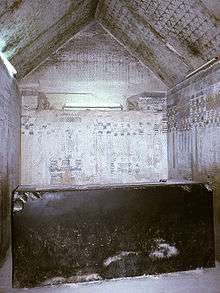
From a different perspective: The Lutheran church {having as its facade the same form as above} is now a boxing gym. "This has just done my head in because everything always comes full circle but never in such a poetic way as this. I feel so joyful, I couldn't have been more delighted by this whole thing." Sue Perkins' episode of Who Do You Think You Are / BBC2.
That internalization [i.e., to 'wrestle'] that we all do to define something. Representation of. Question. A figment of the imagination since the dawn of human experience?
Side note: ''Prudence, Temperance and Charity = Freemasons equivalent. ['Inside the Freemasons' / Satellite TV]. Coincidence?
Continued: Gilgamesh equivalent = now went in search ['together', with his new 'mate', indicative of the 'lower'] for his 'higher' self. Represented as the 'plant of eternal life'. The beginning of that journey, [which started on the 'eleventh' tablet. Think about it, in relation to twelve and thirteen]...represented as the 'unconscious',i.e.,Cedar trees/wood. Of whom the main 'character' = Huwawa. Representing ''the guardian at the gate''. As does the Crete equivalent, the 'Minotaur' [i.e.,in part].
'Labyrinth', for a 'face' - relative to an understanding. Chapter four. 'The Sirius Mystery'].
Quran equivalent...'submission' to god, in relation to the Quran. 'Higher' self found, within it. Hermetic equivalent as explained by Francis Bacon..."Gross matter...is the nutriment of bodies , and spirit is the nutriment of souls. But besides these, there is mind, which is the gift of heaven. [Think about it, in relation to the 'divine bit' ]. "By the light of mind, the human soul is illumined ". 'That which is 'lost' has now the potential to be found'. Relative to the candidate and/or reader. Freemasonry equivalent. Explained elsewhere.

A gift?

'Yellow' to enlarge.
As seen from a different perspective {can you 'see' it? i.e., in relation to that 'bit'}: "Most importantly I became convinced - not just with my mind but my whole organism - that something greater than myself existed. I could no longer call it ''other'' because it seemed to include the whole of myself. I could certainly not call it god because that name solidified it and turned it into an object at once. What it really seemed to be was a dimension of being. And in a way it was still ''other'' because I felt it was always there, never absent, whereas I was by no means so faithful in choosing to be aware of it. When I was aware of it though, it turned the whole world into a gift. Not to be possessed but to be experienced. The rainy sky was a gift, the newspaper boy cycling up the road was a gift - as soon as I could see everything as a gift - in this way - I could relish it and relate to it. So awareness of that other dimension {of being} was something I wanted very much to cultivate. But how?" ['Chapter 8 'Working Towards Transformation' from the book 'The Spiritual Journey' / A. Bancroft].
Something extra to ponder on: "Dimension" {-''less''?} in relation to '137'. Enlarged elsewhere. And/or in answer to the question "But How?" - a study program gives {gift?} the same results.
Side note: ''Wise men make more opportunities than they find." [Francis Bacon]. Quote used in the address to the 'Westminster locals' {Oct 2015] by the Chinese President Mr Xi Jinping.
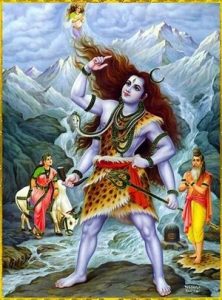 Sufi equivalent..."For the more one takes off the coarse clothing of this world, the more one feels the warmth of 'ones creator', and the closer to the 'surface inner' one becomes. Closeness to the truth, is in relation to the amount of false materially one has thrown away. In giving away ones 'multiple aspects', one comes closer to the only truth." [Chapter one, 'The Secret of Secrets'. Emphasis, this readers]. Put ''garment'' in the usual box.
Sufi equivalent..."For the more one takes off the coarse clothing of this world, the more one feels the warmth of 'ones creator', and the closer to the 'surface inner' one becomes. Closeness to the truth, is in relation to the amount of false materially one has thrown away. In giving away ones 'multiple aspects', one comes closer to the only truth." [Chapter one, 'The Secret of Secrets'. Emphasis, this readers]. Put ''garment'' in the usual box.
"...nothing is covered that will not be revealed, or hidden that will not be known." [Matthew X, 26].
"There is a state in which all and everything is gathered - and it is the 'Divine' wisdom." [Quote by Muhammad. Same chapter, same book], i.e.,"The purpose of the 'spirits' coming to this lowest of created realms is that it should seek to return to its 'previous' closeness......."and in accordance with general laws, by following certain steps can return to ones origin."[ Chapter one and two {first page} same book].
"....My life you can take, my integrity never, he replied, before one of the ruffians felled him with a single blow to the head. Just before he died Hiram was able to toss the golden triangle down a well. And that is how the Word came to be lost. As we shall see the quest for the lost Word, is like the quest for the Holy Grail, intimately tied up with the mysteries of human physiology."[ Chapter 18, 'The Sacred History'].
Side note: "This story indicates the preservation, within the Mystery Temples and secret brotherhoods during thousands of years, of the secret of the Trinity, the ''golden Triangle''. It is a reminder that there are three 'higher' {principles?} of thinking/feeling and willing...and in preparation for it, men looked forward to a time when the knowledge of the spirit would no longer be at variance with the ''sons of fire'' who build up the physical sciences. The element that unites them must be another kind of 'fire': incarnate love {i.e.,''grace'' link}. But in order to comprehend this fully, man must know the secrets of the ''seven metals'', that is, of his evolution. It is the crowning work in building of the 'Temple'." ['The Flaming Door' from the chapter entitled 'The Three and the Seven'].
Those 'metals' in relation to the Raft of El Dorado. Enlarged elsewhere.
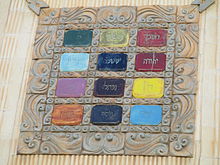 A working example {in 'story' form}: ''As far as Tom could remember, the last time all twelve monks had attended a villagers' Mass - or a school Mass for that matter - was on the providential day three and a half years ago when, out of the blue, Brother Joachim had arrived. Until that moment Tom had never quite understood what his 'peculiar' gift was for.'' [Page 14 'The Serpents Circle' / P. Harpur].
A working example {in 'story' form}: ''As far as Tom could remember, the last time all twelve monks had attended a villagers' Mass - or a school Mass for that matter - was on the providential day three and a half years ago when, out of the blue, Brother Joachim had arrived. Until that moment Tom had never quite understood what his 'peculiar' gift was for.'' [Page 14 'The Serpents Circle' / P. Harpur].
N.B. Day of Ephiphany = 12 days from Xmas Day.
And/or: 12+7 = ''Nineteen''.
Compare to "In the beginning was the word, and the word was with 'god', and the word was god." i.e.,two 'meanings' on the same 'pole' relative to a start and END point. That link to Oak Island. Purpose of. Explained elsewhere. As a side note, it is worth noting, that if anything of substance is found on Oak Island, it will be a representation of that ''golden triangle.'' Recall the quote made by F. Bacon.
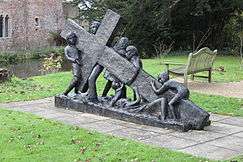 A side step: Represented {in part} in the Egyptian case as with a 'feather', or as at Stonehenge with the 'Blue' stones. As opposed to the Sarsen ones, [ 'gross' equivalent ]. The Egyptian 'weighing [key] of the heart' ceremony that was led by Anubis the dog/jackal 'god'. Its equivalent in the night sky being Canis Major [The Dog], the interpretation of which, is related to the word 'weight'....i.e., "as the star seems to rise with difficulty from the horizon". [Chapter three. 'The Sirius Mystery'. R.Temple]. Think about it, in relation to... ascending / descending and/or positive over negative.
A side step: Represented {in part} in the Egyptian case as with a 'feather', or as at Stonehenge with the 'Blue' stones. As opposed to the Sarsen ones, [ 'gross' equivalent ]. The Egyptian 'weighing [key] of the heart' ceremony that was led by Anubis the dog/jackal 'god'. Its equivalent in the night sky being Canis Major [The Dog], the interpretation of which, is related to the word 'weight'....i.e., "as the star seems to rise with difficulty from the horizon". [Chapter three. 'The Sirius Mystery'. R.Temple]. Think about it, in relation to... ascending / descending and/or positive over negative.
Represented within higher / lower, [Anubis]. The reason for the difference in size between, head and body of the Sphinx. Symbolism only. Benefits of, in relation to the observer and/or reader, through an 'understanding'.
That ''weight'' [Alchemy equivalent 'gross'], represented in ALL cultures with very large blocks of stone. 'Tons' of stone. Understanding that gives a more balanced appraisal of the following....
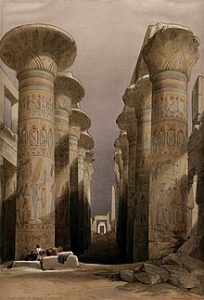
Mountain low, Valley high.
"Why specify temples built out of unwieldy 200 ton blocks when it would have been much easier, much more feasible and just as aesthetically pleasing, to use smaller blocks of say two or three tons each? There are really only two answers. Either the people who designed these hulking edifices had knowledge of some technique that made it easy for them to quarry, manipulate and position enormous pieces of stone, or their way of thinking was utterly different from our own.....in which case their motives and priorities are unlikely to be fathomable in terms of normal cross - cultural comparisons." [Chapter 3, page 31, 'The Message of the Sphinx' by G. Hancock and R. Bauval].
Analogy of same..."It is the spiritual seed implanted in the soul of man, through whose growth immortal life is attained. Its light is the rose of the cross that is formed by wisdom and power, being joined together into one and sending its influence through the world. But below all is the realm of illusion, of the most gross and heavy materialized thoughts, sinking into darkness and death [chaos]...." [Extract taken from the book 'Magic: White and Black' by F. Hartman].
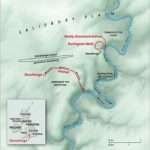
Woodhenge / Stonehenge ?
Think on it relative to the word 'gravity'. Or an example of the similar concept, but in a different form, could be the nine coffins found in Tutankhamuns tomb. Large wooden ones, together with the smallest being the golden one. While recalling what 'wood' and 'stone' represent. A 'development' one stage further...relative to an understanding...in that inner sense...of the 'word'.
That same link to... 'Unconscoius came a Beauty' / C. Helminshi ]. Especially in relation to the ’feminine principle’...i.e., Shulamite / Nefertiti. Think about it... in relation to the meaning of ‘Nefertiti’. in relation to the word ’Beautiful’. Look it up. Rather than giving in to those first impressions and leaving it to ‘later’. Or putting it to ‘one side’. That final link to J. Campbell quote about a symbol being "energy evoking" in relation to a final destination.
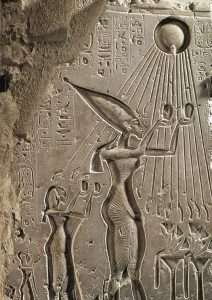
Triangular headgear or tumulus?

What are EACH sat on?
And/or: ''As has been said, Ra is not the sun itself, but rather the solar energy {'spirit'?} which, during the course of its daily cycle, animates all the organic {'soul'?} functions of the human body, one after the other, at each hour of the day and night. It is in this way that we are subject to it....'' ['Sacred Science'].
And/or: "Sirius is sometimes called the 'Sun behind the sun', indicating that while the star we call the Sun is related to our physical center of Self in our Solar Plexus and the expression of our Selves within the physical earth, Sirius represents a more hidden center."
A working example {i.e., apply the above - to get an 'idea' within a MIND SET}: ''We must get out of the bad habit of seeing Angels and Archangels as fairy-like winged creatures created entirely for the good of mankind.
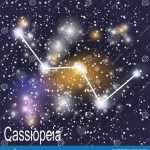
Upside down in the Northern Hemisphere. As Orion is in the Southern one.
They are units of specialised energy with an inherent awareness which enables them to accomplish or at least attempt the Original Intent behind them. Angels are more like guided missiles than bodiless babies with wings!'' [Page 18 'The Ladder of Lights' / W. G. Gray].
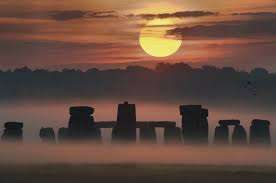
Fire or water?
Side note: The ''remnants of light'' used to determine the age of Waun Mawn - N/W Wales. The origin to the creation of Stonehenge. From West to East. Soil samples having to be collected in darkness - hoping to find that elusive 'light' within fragments of crystal.
Refresher: "We don't know the purpose of the white quartz pebbles. There found in mortuary context from pre-historic periods onward and also medieval cemeteries. There's a passage in the Bible - Revelations- about a person who has found Christ is given a white stone - and in that - a new name."
''It takes ten times as much energy to heat water as it does to heat IRON.'' [QI Elves].

Reason or intuition? As a means...? Flat top? What replaces it? Spirit or Soul? 'Male' or 'Female'? The beginning of a ''new stage/development'' ? Towards what?

Red thread?
Something extra: From a different perspective: "Almost every scientist who has ever kept a journal reports sudden flashes of insight....certain knowledge that reaches the surface by some unknown route: 'I felt an instant and complete certainty,' wrote the mathematician Poincare, who solved an incredibly difficult problem while 'daydreaming' on a bus. Of a similar experience the great Karl Friedrich Gauss wrote: 'As a sudden flash of light, the enigma was solved...For my part, I am unable to name the nature of the thread which connected that which I previously knew with that which made my success possible.'....The 'thread' has been named intuition - not that this explains its nature. It seems to be a second path to understanding. Reason is of course safer and surer {hint, hint}....The Minoan Geeks called her Ariadne {''most pure'' i.e., pure ''energy''?}. Being a seafaring people, they recognized her power of drawing up the tides, as if by an invisible thread; they suspected that she likewise drew at the 'tides of human affairs'. Ariadne's thread is one of the great magic instruments of Greek mythology. It was the clew that guided Theseus through the dark windings of the labyrinth. It has become one of the most powerful metaphors of all ages, so that even the word clew, which once meant only a ball of thread, now even means guidance to a hidden answer {center?}. Thus Gauss was guided through the labyrinth of his own unconscious by a thread he could not name. The usual place for lunar worship was the forest....The first Greek temples must have been groves of trees, for when they built stone temples, they continued to surround them with stone images of trees {'petrified'?}. Similar in Egypt - where the early temples were stone ''forests'' of artificial eucalyptus trees. Near the pyramid of Amenemhat III - lie the remains of the greatest of these temples, the Egyptian labyrinth" - it contains an estimated 36000 trees of 'stone'....[Page 40 'Arachne Rising: The Search for the Thirteenth Sign of the Zodiac' / J. Vogh].
Why eucalyptus ? Any link to ''36'' ?
Reason {or intuition} = ''Tower''? Flat top? What replaces it?
Question. What is the difference between Tower/Castle/Fortress/Palace or Temple?
Etruscan to enlarge.
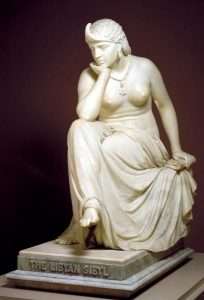
Sphinx is to 'fire' as Sibyl is to 'Soul'.

'Father' of terror. Large feet or 'hands'?
Recall the forests that these islands were covered in from the very beginning. Matriarch? Followed by Patriarch 'religions'? But what does that really mean? Something 'unknown' becoming 'known'? Unconscious {unmanifested?} - Conscious {manifested?}. Lunar/Solar as a means.…? Which comes first and why? OR does it matter?
And/or: 'Petrified' {i.e., 'joining' of the two i.e., wood/stone} - in relation to 'Ossified' {Spine} of say Osiris? in relation to :
"The fire-wheel is in many myths, the 'masculine' form of the 'feminine' spindle." [Page 78 same book].
Ariadne / Dionysus ?
Anima/Animus as a means.....?
Gnosis in relation to the cognitive faculty? Enlarged elsewhere.
Wood-henge / Stone-henge?
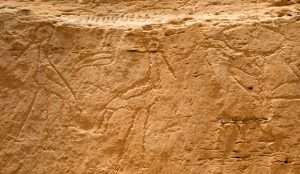
The earliest known hieroglyph for ''horizon''. {Ibis bird between two storks}. Found at Abydos along with the ''palace'' of Ramesses and the burial site of the Scorpion king. Something in flight or with that potential in mind? A 'migration'? 90-180?
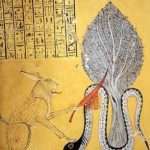 Side note: "The word 'temple' comes from the prehistoric Indo-European root 'tem', - which means ''to cut'' . A temple is a sacred place, a place of retreat that is literally 'cut out' from busy demands of everyday existence. The Greek word temenos - the scared precinct in which a sanctuary is located - originates from the same root. The Latin word religio means to ''relink'' {i.e., to the universe} - back to the mysteries depths of our own being.....As Henry Corbin notes {'Temple and Contemplation'} - the word templum originally meant a vast space, open on all sides - from which one could survey the whole surrounding landscape as far as the horizon. This is what is meant to contemplate - to set ones sights on...." [Page 388 'Alexandria' Vol 3. D. Fideler].
Side note: "The word 'temple' comes from the prehistoric Indo-European root 'tem', - which means ''to cut'' . A temple is a sacred place, a place of retreat that is literally 'cut out' from busy demands of everyday existence. The Greek word temenos - the scared precinct in which a sanctuary is located - originates from the same root. The Latin word religio means to ''relink'' {i.e., to the universe} - back to the mysteries depths of our own being.....As Henry Corbin notes {'Temple and Contemplation'} - the word templum originally meant a vast space, open on all sides - from which one could survey the whole surrounding landscape as far as the horizon. This is what is meant to contemplate - to set ones sights on...." [Page 388 'Alexandria' Vol 3. D. Fideler].
''Running the Fields''? {Sed Jubilee enactment}.
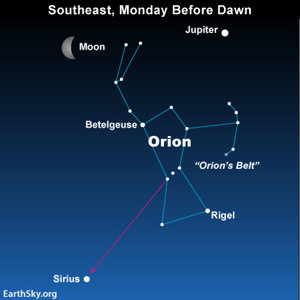
Summer triangle and Winter one? Above/below the 'belt' ? Which and why?
We are All apprentices looking to find our way from A to C, [implied by the same authors. ’subconsciously’ or otherwise ]. Represented in the night sky as ‘Orion The Hunter’, of whom Poseidon was the 'father'. The word 'hunter' and 'giant' associated with same [both key words], of whose head it is said is always above the seas {'horizon'?} when ever he decides to walk within it. The 'club' , 'indestructible' and made of 'bronze', [key].
Side note {'side light'?}. Poseidon whose domain {'master'} was Atlantis. Question. What does it represent relative to the whole i.e., subject material.
Those three notable stars, always show/point North. Think on it, i.e., relative to Sirius. The beginning or 'dawning' of something. Those three stars ‘under his belt’. Representing a certain accomplishment, [explained within]. Sometimes shown, [depending on author]...with the ‘Hare’ symbol close by. Indicative of an understanding of...In relation to ‘its’ purpose. In the context / concept of a ‘journey’. Both inner and outer, [ Micro/Macro. [Keys].
Why the Hare? Symbology as previously mentioned is just a generalisation of the main theme. The construction of say a Boeing 747 is a good example. We understand the general idea of how that plane, [main theme], is put together; in comparison say; to an indigenous tribe of the rain forest-who may see it as something created by the ‘gods’- but we do not understand exactly; what those specifications are that put it all together. Nor do we need to know in order to intake that general idea.
That generalization helps to build a foundation on which an understanding of a subject can be formed. [Explained throughout]. As it is with any subject. Past present or future. Which again has a certain logic to it.
Whatever we learn, regardless of what it is that is learned..then sooner or later 'it' becomes ‘intuitive’ does it not? This subject is no different. The only difference is; according, [implied] by the same authors; is that this subject, unlike most others is not just relevent in [A]. It helps with A-C, [should B and C exist of course]. Remember objectivity at all times. To understand the subject. Nothing more.
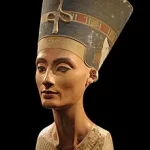
Which of the three?
"The prerogative of the human race is objectivity, the essential content of which is the Absolute. There is no knowledge without objectivity of the intelligence; there is no freedom without objectivity of the will; and there is no nobility without objectivity of the soul. In each of these three domains, it is a question of both a horizontal and vertical objectivity". [First page, first chapter..."Esoterism as Principle and Way"/ F. Schuon].
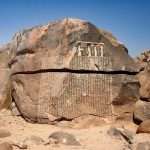
'True Will' found inside?
And/or: "The revelation that strikes a man in the moods of waking consciousness, is that this objective is always there. All he has to do is learn to see it, and everything else follows; his true will awakens." [From the chapter 'Two Russian Mages' within the book 'The Occult' / C. Wilson. Includes italics with the exception of the word in bold print.].
Think about it in relation to those 'three' universal constants.
'On Having No Head: Zen and the Rediscovery of the Obvious' / D. Harding.
Refresher: ''You cant just read it - you have to 'see' it.''
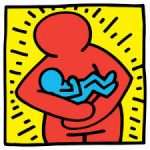 A working example {in the 'landscape' sense of the word}: "The Great River was itself regarded, like all landscape features of ancient Egypt, as the body of a god. His name was Hapi, and he was usually depicted as androgynous, for he was the nurturing 'mother' of the abundant life of the Nile valley. Hapi was not just a ''personification'' of the river - it was as if - people saw through the vivid landscape in which they lived to the energies, forces, and beings of which it was an expression." [Chapter entitled 'A Metaphysical Landscape' from within the book 'Temple of the Cosmos' / J. Naydler. Includes italics - with the exception of the word in bold print].
A working example {in the 'landscape' sense of the word}: "The Great River was itself regarded, like all landscape features of ancient Egypt, as the body of a god. His name was Hapi, and he was usually depicted as androgynous, for he was the nurturing 'mother' of the abundant life of the Nile valley. Hapi was not just a ''personification'' of the river - it was as if - people saw through the vivid landscape in which they lived to the energies, forces, and beings of which it was an expression." [Chapter entitled 'A Metaphysical Landscape' from within the book 'Temple of the Cosmos' / J. Naydler. Includes italics - with the exception of the word in bold print].
"Regarding this new point of awareness which is the birth of the observing I, this is the baby step of a new state of being, one that will lead to the ability to live in the presence with detachment, peace, independence of outer circumstances, freedom from distorted and imitated habits." ['Wisdom of the 4th Way]. Continued elsewhere.
Try ''child'' to see it from a different perspective.
Question. Copy cats?
Refresher..."Got to see it, rather than just read it..." John Humphrys talking to D. Tennant and Greg Doran in relation to the plays by W. Shakespeare. [400th anniversary. Radio 4. 23/04/16].
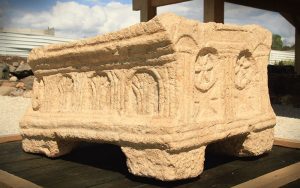
Side note: {A work in progress}: ''The Jewish Talmud, a 4th century AD source, referred to Magdala as Migdal-Nunya, meaning ''tower of fish''....This is one explanation for the origin of the town's name, Migdal, meaning tower..... The harbor, most likely in use up until 67AD....Archaeologists believe that shortly after the conquest, flooding covered the northern side of Magdala, burying thus preserving it for 2000 years.'' [Pages 16/25/30 'Mary Magdalene: Insights From Ancient Magdala' / J. Ristine]. Coincidence?
And/or: ''To plant a life giving seed one has to dig into the earth.''IN RELATION to the journey Mary and Joseph took on their way to Bethlehem. Along the Jordan Valley - the lowest elevation on earth. [ 2nd Week of Advent / Magdala / K. Nickhols / 2021].
Analogy of same..."Likewise the phases of development during which a Great Entity [explained / enlarged elsewhere] organises itself are internal and therefore subjective. They are not carried out under the stimulus of sensations derived from external conditions, but under the stimulus of feelings arising from internal conditions, [objective link. This readers input]... and the phase corresponding to the phase of existence which a human soul passes through between death and birth." [ 'incarnation'/ 'reincarnation' link]. Chapter 8, 'The Cosmic Doctrine'. Mentioned elsewhere].
"In research work it is usually considered to be wiser to hunt up the facts then think out the implications for oneself. Afterwards one can compare results with the standard authorities, and then decide upon ones attitude. In dealing with the great myths such as those of Isis and Osiris, or with the ancient 'sun' and 'moon' myths, the student cannot as a rule follow this method in its entirety. In all cosmic myths there are at least two aspects to be considered, the sensible and the intelligible meanings. In applying a cosmic myth to the microcosm [man], there are also two aspects which have to be taken into account, the objective and the subjective. One must know something of both these aspects before one can realize the implications of the facts one has collected." [Chapter 5, from the book by C. Seymour].
"...the 'nails' of objectivity - which give conscience to thought."
The symbol of which is the Crown of Thorns, i.e.,"The 'thorns' of the crown center function as the 'nails' of objectivity..." [Taken from 'letter 5' from within the book by Tomberg].
"But what is the difference between objective and subjective states of existence? ...The popular idea is that objective perceptions are real and subjective ones only the products of our imagination. But a little reflection will show that all perceptions, the objective as well as the subjective ones, are the results of our ''imagination." [Quote from the book by F. Hartman].
Exercise. Put all the above together to encrypt the following. Or put another way the paragraph below 'explains' [summarizes] all the above.
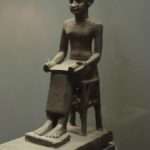
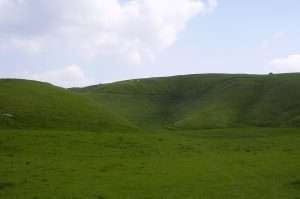
Uffington White Horse with the 'Manger' below. Dragon Hill to the left. Giants stairway to the right. ALL in 'middle' England.
" The first power that meets us at the threshold of the souls dominion is the power of the imagination: it is the plastic and creative power of the mind. Man is conscious of being able to receive ideas and to put them into forms. He lives not entirely in the objective world, but possesses an interior world of his own. It is in his power to be the sole autocrat in that world, the master ['higher' link] of its creations and lord over all it contains. He may govern there by the supreme power of his will, ['three aspects' link] and if ideas intrude, which have no legitimate right to exist in it, it is in his power either to drive them away or suffer them to remain and to grow ['repetitive /groove' link]. His reason is the supreme ruler in that world, its ministers are the emotions, If mans reason, misled by the treacherous advise of the emotions,['lower' link] suffers evil ideas to grow, they may become powerful and dethrone reason, unless it employs the Will to suppress them...
Side note: ''The title is made up of the titles "agha" and "khan". The Turkish "agha" is "aqa" (Āqā) in Persian. The word "agha" comes from the Old Turkic and Mongolian "aqa", meaning "elder men",[3][4] and means something like "master" or "lord." "Khan" means king or ruler in Turkish and Mongolian languages.''
Khufu/Khafre?
'M'enkaure? Cassiopeia to enlarge.


Division.
A work in progress: "This symbol of the etheric plane is nowhere no more openly announced than in The arcane magic of the lozenge, as symbol of the Etheric plane, is nowhere more openly announced than in Notre-Dame, in Semur-en Auxois, France. In a detail of statuary, a figure is displayed within a huge lozenge, the bounds of which are decorated with small lozenges. Altogether, there are 41 lozenges in this single architectural detail. What is the importance of the figure which occupies such a clearly defined Etheric space? The image within the space is that of a Master Mason, and initiate. We know that he is a Master Mason because he carries the tools — even the emblems — of this trade, in the form of the square and plumb. We know that he is an initiate because, besides being enthroned in the Spiritual Etheric, he wears the Phrygian cap, or liberia.”! This portrayal is iconic — it is intended to record the fact that this remarkable building was raised by initiates. It is a page in a book of stone, which offers a glimpse through its lozenge form into the Spiritual world beyond.
Side note: ''Like 41 and 101, 1001 exceeds the great number and therefore comes to mean 'infinite / numberless'. One may think of Binkir kilise, 1001 churches, in Anatolia, or the best known example, 1001 Nights. This number leads to infinite extension, although attempts have been made to explain it as an allusion to the heptagon and mysterious relations between the prime numbers 7, 11, and 13." [Page 278 'Mystery of Numbers' / A. Schimmel].
Western.

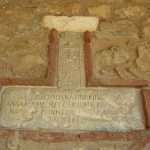
"Demeter and Kore, mother and daughter, extend the feminine consciousness both upwards and downwards. They ADD an ''older and younger'' ''stronger and weaker'' dimension to it and widen out{N/S?} the narrowly limited conscious mind bound in space and time {E/W?}, giving it intimations of a greater and more comprehensive personality which has a share in the eternal course of things. We can hardly suppose that myth and mystery were invented for any conscious purpose; it seems much more likely that they were the involuntary revelation of a psychic, but unconscious, pre-condition." [Page 162 'Science of Mythology'].
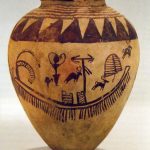
Shadow or light?

Part of the moon's surface is much older than experts previously thought, with many of the craters pockmarking the iconic "man in the moon" predating that landform by hundreds of millions of years, new research finds." Anima or Animus?
Hence: "But the Demeter-Kore myth is far to feminine to have been merely the result of an anima-projection. Although the anima can, as we have said, experiences herself in Demeter Kore, she is yet of a wholly different nature. She is in the highest degree 'femme a homme'....whereas Demeter-Kore exists on the plane of mother/daughter experience, which is alien to man and shuts him out. In fact, the psychology of the Demeter cult bears all the features of a matriarch order of society, where the man is an indispensable, but on the whole disturbing factor {'shadow'}." [Page177 'Science of Mythology'].
Continued: So far as the lozenge-symbolism at Ripoll”” is concerned, however, the arcane symbolism seems to have been taken to a much deeper level of meaning. We reasoned that while the verticals were, on an exoteric level, heraldic, yet they must also have an esoteric meaning. Not quite knowing where to look for such a meaning, we decided to leaf once again through Fulcanelli’s masterpiece. Perhaps this old alchemist would be able to help us to understand the meaning of the verticals within the lozenge." [Page 305 'The Zelator'].
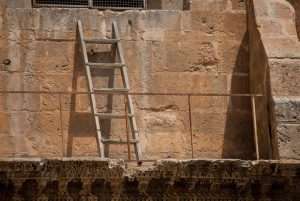
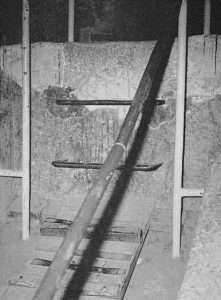
The Great Step.
"We record this footnote to the story of our development because it illustrates so well how a mere word from a Master can take one enormous distances towards understanding. As so often happens with the search for meaning in an alchemical symbol, once we had understood the significance of the verticals, the meaning of the entire capital became clear. The Quintessence contains ‘manifest nature’ in the dualities which are the basis of the perceptive act. This small lozenge therefore represents a particular doorway into the material world: it is more powerful than the huge Ru over the portal at Chartres. Around are the flowers, birds and animals which represent the Etheric world and the material world. The bird is esconced in the Etheric acanthus leaves and spirals, with the patera of eight leaves: all these symbols point to the Etheric. The two beasts (lionesses perhaps) fight, indicating both the animal nature, and the conflicts, within the Astral plane. Fulcanelli discusses Saturne as an anagram for Natures, in connection with the shallow grooving on a plinth, (op.cit., p.115). The hermetic secret is that nature can manifest only through dualities — hence the grooving, and hence the relevance of this Fulcanelli passage to our own search."
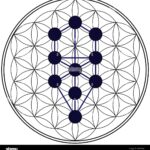
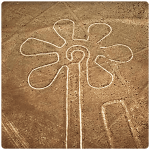
Dried flowers found between the brow of the golden child - Tutankhamun.
Acanthus is a genus of about 30 species of flowering plants in the family Acanthaceae, native to tropical and warm temperate regions, with the highest species diversity in the Mediterranean Basin and Asia. This flowering plant is nectar-producing and depends on butterflies, such as Anartia fatima, and other nectar-feeding organisms to distribute its pollen. Common names include Acanthus and bear's breeches. The generic name derives from the Greek term ἄκανθος (akanthos) for Acanthus mollis, a plant that was commonly imitated in Corinthian capitals.[3][4]
The genus comprises herbaceous perennial plants, rarely subshrubs, with spiny leaves and flower spikes bearing white or purplish flowers. Size varies from 0.4 to 2 m (1.3 to 6.6 ft) in height.
And/or: As early as the 2nd century B.C. the occupants of Stratonicea honoured their patron goddess Hecate, a diety of magic and transitions, with the annual Festival of the Key. This celebration, which was unique to Stratonicea, began with a six mile long procession in which a key was carried to the city from a temple dedicated to Hecate in the neighboring town of Lagina. This is the only known temple devoted to the goddess. The procession then returned to Lagina through pine forests and past spring fed reservoirs.
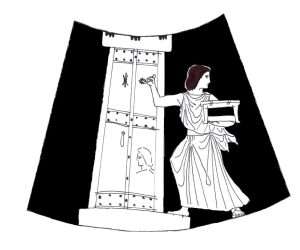
Top or bottom?
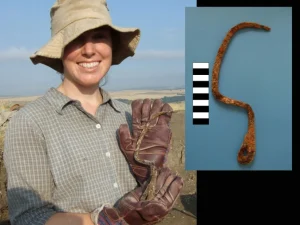
Laconian key to enlarge.
Afterwards, onlookers went through the arched gateway into the sanctuary for a day of music, prayers, and sacrifices of cattle or sheep on a marble altar in front of the temple....Small groups of worshippers were admitted to the temple's interior to place bunches of grapes or libations of wine in a subterranean pit as an offering to Hecate. Each year, a married couple serving as priest and priestess of Hecate would appoint an unmarried daughter, or another young girl from the community, to carry the key in the procession....The goddess Hecate is depicted on Greek vases as a young maiden carrying two torches, a reference to her role in guiding Persephone, daughter of Demeter - goddess of agriculture - back from the underworld each spring....
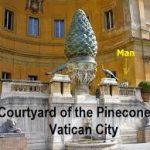
Three pine mesolithic postholes found under the car park at Stonehenge.
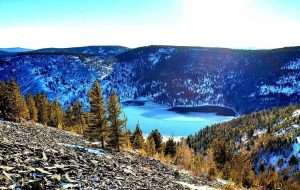
Lady of the lake?
The residents of Stratonicea built Hecate's new sanctuary entirely in marble. Visitors would have entered through a tall arch and approached the temple. Corinthian columns topped with ornate acanthus leaf capitals - a novel design at the time - adorned the temple's facade....Many scholars believe that the worship of Hecate originated in Caria {S/W Turkey}, bounded by the Aegean Sea to the west and the Taurus Mountains to the east....That she was an adaptation of the local Anatolian goddess {'adopted'?}....The cult of Hecate at Lagina likely predates the founding of Stratonicea....The first mention of Hecate in ancient literature appears in Hesiod's Theogony....as the diety whom Zeus honors above all. The only child of two Titans, Asteria and Perses, Hecate is described as aiding men in battle {towards peace}, and acting as a nurse to the young." {'Archaeology: Goddess at the Crossroads' / May-June 2025}.

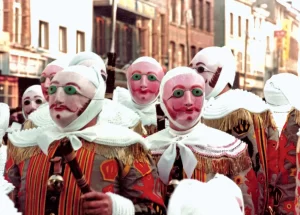
Shrove Tuesday - Belgium.
Continued: ...In that interior world is the battle ground ['The Bhagavad Gita' link] of the 'gods'. There the gods of love and hate , the daemons of lust, and pride, and anger, the devils of malice, cruelty, and revenge, vanity, envy, and jealousy, may hold high carnival, ['feast of fools' link] they may stir up the emotions, and, unless subdued by Reason,['higher' link] they may grow strong enough to de-throne it. Reason rests upon truth. Wherever truth is disregarded illusions appear. If we lose sight of the highest, the lower will appear to be the highest, and an illusion will be created. 'One' is the number of truth, 'six' is the number of illusion, because the six have no existence without the 'seventh', they are the visible products of the one, manifesting itself as six around the invisible center. Wherever there are six, there must be the seventh, although the presence of the latter, may not be manifest. One is the number of life, and six the number of shadows from which life has departed." [Chapter 6, 'Magic: Black and White' by F. Hartman].
Six = A + B. See it? Represented by the word ''shadow'' and/or 'UNmanifest'. Add the other 'thing' to it = C. Get it?
Question. Top - down or bottom - up OR both : as a means to express something.
''Dethroners'' to enlarge.
Yet another analogy of same; different author; different time period..."And in order to be able to understand the phenomena of nature, according and not according to law, proceeding around us, one must first of all consciously perceive and assimilate a mass of information concerning objective truth and the [possible. This readers input]... real events which took place on earth in the past; and secondly, one must bear in oneself all the results of all kinds of voluntary and involuntary experiences." [Chapter 10, 'Meetings With Remarkable Men' by G. Gurdjieff].
Both of which ,i.e., objective/subjective have to be represented in some form for that understanding to take place i.e., the Micro within the Macro.
"...the 'nails' of objectivity - which give conscience to thought."
The symbol of which is the Crown of Thorns, i.e.,"The 'thorns' of the crown center function as the 'nails' of objectivity..." [Taken from 'letter 5' from within the book by Tomberg].
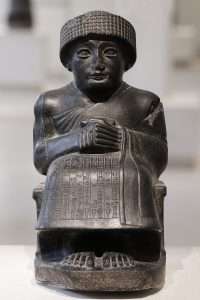

Altar? Female aspect 'in front'?
And/or: ''Onyx comes through Latin (of the same spelling), from the Ancient Greek ὄνυξ, meaning "claw" or "fingernail". Onyx with flesh-coloured and white bands can sometimes resemble a fingernail.[7] The English word "nail" is cognate with the Greek word.''
Remember; before those impressions take hold; that Christ himself was taught; by whatever means; the same subject - and by the same method?
As an example of such- One of the reasons for the chose of the hare is that Hares unlike rabbits rear there young on top of the ground which makes them more acutely aware of there surroundings. Eyes and ears and acute movements also contributing to the same theme. Others explained elsewhere.
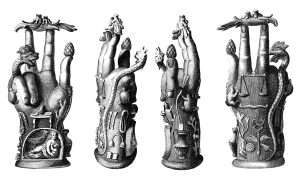
The hand of Sabazios. Thumb = pinecone?
First impressions might say...‘Sounds like a lot of superficial fluff’. So does;to some... the ‘two times table’ in relation to its relevant subject...as a whole- The mathematical one. We all understand the benefits of understanding the ‘parts’ that belong to the ‘whole’. [Key. Explained elsewhere]. Not just the bits/pieces that we are at ease with. Do we not. You could say..."You cannot compare this subject to the mathematical one" :-- No ones comparing anything. A subject after all is just another subject. Nothing else. Everything else including that question is within the context of each individuals imagination is it not. Represented by those first impressions. Yes or no?
"Fusion, inner unity, is obtained by means of 'friction', by the struggle between 'yes' and 'no' in man. If a man lives without inner struggle; if everything happens to him without opposition; if he goes wherever he is drawn or wherever the wind blows, he will remain such as he is. But if a struggle begins in him, and particularly if there is a definite line in this struggle, then, gradually, permanent traits begin to form themselves, he begins to 'crystallise'. Crystallisation is possible on any foundations." [Extract from the book by Tomberg. 'Letter Xiii' ]. Link to ''Temple'' symbolism.
'Unseen Warfare' / Nicodemus of the Holy Mountain.
'By endurance we conquer'. Ernest Shackleton.
Try ''line of sight'' and/or ''afar'' to give clues as to a start and end point.

Recall what black is; in the main; symbolic of. 'Twenty-three' were placed inside. Together with ''found upside down in a 'pit' {''Well'?} within the Sphinx Temple.'' Understanding all that symbolism, especially in relation to the secret cavern of Sokar, gives clues as to Mr Khafres status. Question. When does Orion 'appear' upside down? ''Backwards'' link?
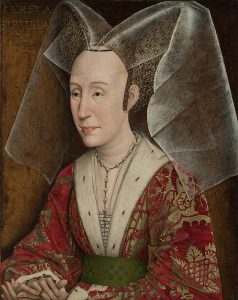
'Twin horned'?
A working example {universal one?}: " What survived was the immense trapezoidal platform, known today as the Hara esh-Sharif, where stand the Al Aqsa Mosque and the Dome of the Rock, the third and fourth most sacred places in Islam...The Dome of the Rock is so called because with it lies an enormous megalith, known to the Jews as the Shetiyah - the 'Foundation'. When the Temple of Solomon was erected over this exact spot in the 10th century BC, the Shetiyah formed the floor of the Holy of Holies and the Ark of the Covenant, stood upon it. The Shetiyah is not the only megalith in Jerusalem that dates back, potentially, to what the Edfu texts would call 'the time of the gods'....This huge natural rock has been in this place, at the summit of a primeval mound, rather similar to the natural hill now enclosed with the Great Pyramid of Giza, for an incalculable period...It has however been modified by human beings and there is now a hole cut through it which sheds a beam of light into the natural cave, directly beneath it - known as the 'Well of Souls'...." ['The Magicians of the Gods'].
Question: Top/down or Bottom/up?
REFRESHER: "The Kingdom of Heaven is within you. The time has come for external forms and expressions to be left behind. There is no Temple in the heavenly Jerusalem, for religion has no place in Heaven. Man is his own Temple. A mans heart is the altar of god...." Enlarged elsewhere.
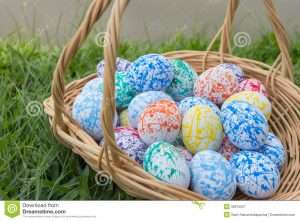
Eggs in ones 'Basket'? 64 of them? All 'Blue'? Try 3:5 to enlarge. Brown ones?
Egyptian equivalent...Entitled: 'The Four Centers of Instruction', i.e.,How to describe the indescribable? How to show the unshowable? How to express the unutterable? {Eastern equivalent, ''effable/ineffable'' and/or ''manifest/unmanifest''}. How to seize the ungraspable instant? Before there was any opposition, any yes and no, positive and negative, before there was any complementary, high and low, light and shadow; before there was presence or absence, life or death, heaven or earth; there was but one incomprehensible power, alone, unique, inherent in the Nun, the indefinable cosmic sea, {Pagan = Annwn or Hebrew ''Ain Sof''?}, the infinite source of the universe, {i.e.,representational of. ONLY} - outside of any notion of space and time. This vision of the original unity was common to every period and initiatory center, i.e., Heliopolis, Memphis, Hermopolis and Thebes. The great mystery is the passage from invisible into visible, {and/or ''manifested'' - as one alternative example} to be realised by the power which from the incomprehensible One....
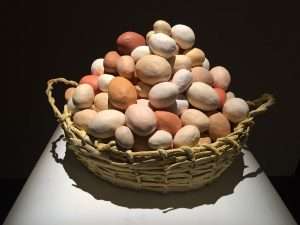
Croc, Hen, frog, Serpent eggs? As a means....?
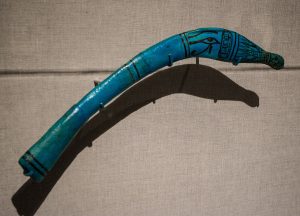
A "blue faience" magical throwstick belonging to Akhenaten found at Amarna.
{ ''divine bit'' link} will call forth the many. The first impulse {''primordial mound'' link - in the ''micro'' sense of the ''word''} - is a projection of the inner desire {''aspiration/inspiration'' link} of the creator-to-be {i.e.,each individual - also UNbeknown by most as the ''demiurge''} - to know himself { i.e.,from that ''unmanifested/ineffable'' point of view} - to realise his own consciousness {i.e.,and/or ''manifested/effable'' - ONCE realised- representational of}. This originating 'power' is symbolised by the heart, {''grace'' and ''beatrice'' link}, and the act of projecting by an arm that throws, or the drawn bow about to let fly its arrow, or the boomerang which returns after having reached its goal. The result is the 'Becoming', expressed hieroglyphically by the scarab, Khepri, i.e., its three essential phases - egg, larva and nymph, before realising its final winged form. [Extract from the book 'Egyptian Mysteries'. Mentioned elsewhere. All emphasis, this readers].
''After a period of independance a boomeranger returns to live with its parents.'' ['The Chase'].

Giving directions?
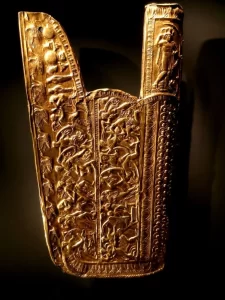
The Golden Quiver. Worn around the midriff
''Etymology: Larva is derived from the Latin word for ghost or mask. Linnaeus (1768) coined the term in a biological sense to mean a phase in the development of an organism that masks the mature form. A larva is an immature (non sexual) stage of an animal lifecycle.''
Understanding the above, especially...''How to seize the ungraspable instant...'' defines the following....
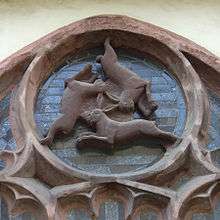
The three of anything. What does it imply? Whether they be Figs; Bees; Hares; Elephants or Legs/feet [Isle of Man logo]. All a link to those other triple aspects as enlarged throughout; especially, Part 1. Clue - ''knock three times''. Hear anything?
The question is...If this esoteric lore has any substance to it. What would that imply; if only hypothetically, to the origins of such archetypes? Or more to the point...how they may be 'created'. Relative to each individual, unconscious or otherwise.
Analogy of same, i.e.,with the same intent..."Tarot cards were merely pictorial representations of the same forces shown in the plays and songs, and told the same eternal story. Possibly the pictures were at one time related to the old oral tradition of worship, as were the Icons used in Eastern Christianity. The pagan worship-system was banned and suppressed, so the images passed into the folk tradition. Only in recent years have the Tarot emerged from anonymity into the clamour of 'occultism', where writers and practitioners forget that no 'secret' body of knowledge is required to account for the images present in the mind of mankind, and that 'magical' orders were open for all in folk-song and ceremonies throughout the centuries." [Taken from the book 'Where is Saint George'. Mentioned elsewhere].
"...Apollo's gift of 'prophesy' first came to him from three bee maidens..." [Wikipedia/''bee''].
"Often the symbols which arise in the dreams and phantasies are strikingly similar to those of the old mystery religions, and the outcome in the psychological development for the individual corresponds to the change which the initiation was said to produce." [Preface to the book 'Women's Mysteries: Ancient and Modern'. Mentioned elsewhere].

Try ''Essenes''.
"According to Jung, a spontaneous vision such as Vladimir Solov'ev [ in relation to his 'visions' of Sophia] represents the surfacing of a primordial archetype. The archetype as such allows the human being a premonition of the 'divine' and becomes a symbol by which the unconscious is brought to the conscious." ['Alexandria' Vol one, by D. Fideler].
"...but the wisdom of the ages, represented in myths and religious symbols, has without doubt a larger vision, a longer range, than that of any individual. If we can understand its teaching aright, they can be taken with a certain justification as a guide, in the sense of a signpost, which might point the way for us as for our predecessors." [Preface 'Women's Mysteries'].
"Happy is the poet who has not lost faith in the feminine shadow of the Divinity." Quote by Solov'ev. Same book.
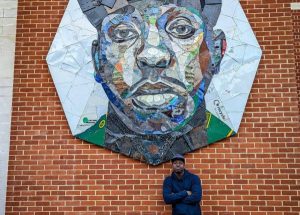
''I'M just glad he got his FLOWERS while he was alive.'' {BBC NEWS/21.2.22}. ''A selfless man.'' R.I.P.
"Alchemy IS philosophy; it is the philosophy - the seeking out of The Sophia in the mind." Quote by M. Atwood as to the definition of the Hermetic arts. Put ''Sophia'' in the usual box, if only to push through those first impressions.
Question. Coincidence? Or a meaningful one?
Understanding that universal framework [found in Parts two/three. Listed as 1-6] especially when understood by what is implied by the 'divine bit' defines all the above. Gives it a certain credibility. As it does with the following...
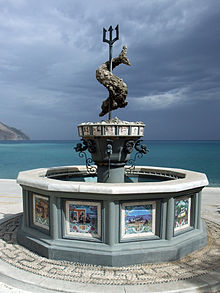
'Tri' = triple link?
"The inner worlds are not truly within the imagination, although that is our first 'entrance' to them; they are within the fabric of the physical planet, [Alchemy defines that 'fabric' as quintessence], and therefore within the human organism which partakes of the substance of that fabric. To create a connection, a pattern within the flux of perception that corresponds with an Archetype that originated within that unknown source, is the ultimate achievement of 'magic.' '' [i.e.,the getting the head around ''it,'' by way of ''a leap of the imagination'': to bridge those 'voids' of unknowing in order for something to become a known. This readers input]. Extract taken from chapter 2, 'The Underworld Initiation' by R. Stewart.
"Magic is not an art or science that depends on literacy or numeracy, for it is generated at levels of awareness that both precede and transcend these functions. The magical levels of awareness, which are the transformative levels, are present both in the individual and in a culture generally." [Same book]. Put ''magic'' in the usual box before those first impressions suggest to the 'higher' self to put it off 'for the time being' or 'leave to one-side'.
'The Underworld tradition, is known as the Secret Way Across the Abyss, or the shortened way. It does not require years of study or graded initiation. It is a series of related experiences....'' [i.e.,the ritual stuff]. Same chapter, same book.
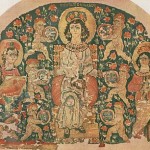 This web page is all about the SLOW BUT SURE WAY. What some call the Hearth Fire Way. Enlarged elsewhere. Understand this subject [by way of those universal keys] gives the same result. N.B. Slow not ''shortened''. There is a difference...and according to some more beneficial, i.e.,see Chapter/ ''letter'' 21; entitled ''The Fool''. From the book 'Meditations on the Tarot' by Tomberg.
This web page is all about the SLOW BUT SURE WAY. What some call the Hearth Fire Way. Enlarged elsewhere. Understand this subject [by way of those universal keys] gives the same result. N.B. Slow not ''shortened''. There is a difference...and according to some more beneficial, i.e.,see Chapter/ ''letter'' 21; entitled ''The Fool''. From the book 'Meditations on the Tarot' by Tomberg.
'As steps in mans awakening'...
i.e., "The Arcanum ''The Fool'' teaches the 'know how' of passing from intellectuality, moved by the desire for knowledge, [personnel use only] to the higher knowledge due to 'love' [i.e.,sharing]. It is thus a matter of transition from the consciousness that theosophical literature calls ''lesser manas'' to the consciousness that it calls ''greater manas'' - which corresponds to the transition from ego consciousness to the consciousness of the 'spiritual' self in anthroposophical literature." Representational of.

Small Sphinx found under 'Big' one + 'Fire' and 'water' symbols can be seen on left rump {Gebel el Silsila}.
 Understanding same defines such paragraphs as ... "Personal experiences and confidences from companions on the Path confirm that there are two key attributes of this level. The first is the 'conversation' with the 'inner master'. He can directly give us the instructions concerning our own Return in Eternity. To symbolically illustrate this conversation, the ''Sepher Yetzirah'', the Book of Creation, says that the ''small king must rise from his throne so that the Great King can talk to him''. In other words, the brain of the earth must be silent to understand the advice from the inner heart." [Extract taken from the book by J. Dubuis]. Link to the word ''teacher''.
Understanding same defines such paragraphs as ... "Personal experiences and confidences from companions on the Path confirm that there are two key attributes of this level. The first is the 'conversation' with the 'inner master'. He can directly give us the instructions concerning our own Return in Eternity. To symbolically illustrate this conversation, the ''Sepher Yetzirah'', the Book of Creation, says that the ''small king must rise from his throne so that the Great King can talk to him''. In other words, the brain of the earth must be silent to understand the advice from the inner heart." [Extract taken from the book by J. Dubuis]. Link to the word ''teacher''.
Analogy of same principles but [heavy going?] - "This means to say that the process of induction [which 'ascends from the earth to heaven'] and that of deduction [which 'descends to earth' ] -i.e.,human endeavor and the action of grace from above - unite and become a complete circle which contracts and concentrates to become a point where the 'ascent' and 'descent' are simultaneous and coincide. And this point is the ''philosophers stone'' [crossover point?. This readers input] - the main principle of the human and 'divine' - it is the solution of the problem posed by St. Paul, or rather the accomplishment of the task given by him, when he wrote of the Cross, being folly to the Greeks, and a stumbling block to the Jews, but to which to ''those who are called, both Jews and Greeks, is the 'power' of God and the wisdom of God" [1 Corinthians i, 22-24]. Extract from the book by Tomberg. 'Letter 21'.
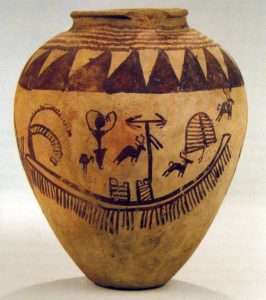
"The Rump is part of the Arabian megaconstellation of the Lion (al-asad). It lies well south of the rest of the Lion, so it may have been a later addition to the figure." Heading north?
In other words nothing more than making a distinction between exo. and esotericism.
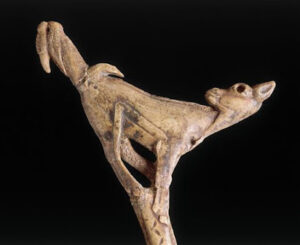
Spear thrower: Landing from a Leap?
That same link to the book, 'Proof of Heaven' by Eben Alexander. Multiple images [archetypes] experienced while in a coma. Those same images as seen and spoken about in multiple cultures throughout countless generations. What the Hebrews refer to as ''keys'' and others as ''signs'' in one form or another. Question. Nothing more than a psychotic event? Or dream 'symbolism? Compare to 'The Believing Brain: From Spiritual Faiths to Political Convictions. How we Construct Beliefs and Reinforce Them as Truths' by Michael Shermer.
"What is decisive for me is that i dream about physics as Mr. Jung [and other non-physicists] think about physics. Every time i have talked to Mr. Jung [about the ''synchronistic'' phenomenon and such], a certain spiritual fertilization takes place." Wolfgang Pauli. Try ''crystallization''.
A {practical?} example: "We knew instinctively that the word had started us on a new journey. Perhaps insights gathered in a previous incarnation were being made available to us. One thing was clear, as the experience began to recede - that it was infinitely better to carry these verbal 'ghosts' in our consciousness than to allow them to work their darkness in the subconscious. Now our consciousness could burn them up with Spiritual activity...The events of Sienna now seemed remote, and we knew that we would not be troubled further by those 'ghosts'..." ['The Zelator'].
![images[3]](https://esotericbasics.co.uk/wp-content/uploads/images31.png)
Where have you seen it before? How to seize the ungraspable instant?
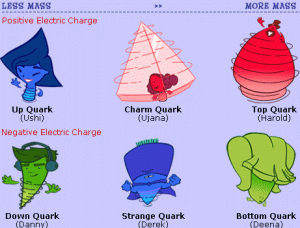
''Flavours''. Taste or smell?
A working example: "It is argued in this course, i.e.,'The Alchemical Amphitheatre' - that although there may be little case for the entirety of alchemical pursuits to be other than coded references to physical transformations, a number of alchemists themselves testified to the psychological elements of their business through dream and vision. Indeed contemporary chemists have benefited from this dialogue of practical work and imagination. Friedrich August Kekule von Stradonitz [1829-1896], who discovered the structure of the Benzene molecule is in this lineage of chemists who have worked in dreams,i.e.,'I was sitting writing in my text book, but the work did not progress; my thoughts were elsewhere. I turned my chair to the fire and dozed. Again the atoms were gamboling before my eyes. This time the smaller groups kept modestly in the background. My mental eye, rendered more acute by the repeated 'visions' of the kind, could now distinguish larger structures of manifold conformation - long rows sometimes more closely fitted together all twining and twisting in snake like motion. But look! What was that? One of the snakes had seized hold of its own tail, and the form whirled mockingly before my eyes. As if by a flash of lightening i awoke; and this time i spent the rest of the night in working out the consequences of the hypothesis." [Extract from the book by M. Katz].

A leap across a gap?
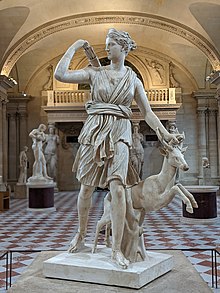
"A chiton (/ˈkaɪtɒn, ˈkaɪtən/; Ancient Greek: χιτών, romanized: chitṓn, IPA: [kʰitɔ̌ːn]) is a form of tunic that fastens at the shoulder, worn by men and women of ancient Greece and Rome.[1][2] There are two forms of chiton: the Doric and the later Ionic. According to Herodotus, popular legend was that Athenian women began to wear the chiton as opposed to the peplos after several women stabbed a messenger to death with the bronze pins characteristic of the peplos. The word chiton is derived from a Central Semitic language *kittān (e.g. Hebrew כֻּתֹּנֶת kuttṓnĕṯ), ultimately from a word for 'flax'.[4][5]" Lozenge floor?
'Symbol and the Symbolic: Ancient Egypt, Science, and the Evolution of Consciousness' / R. A. Schwaller de Lubicz.
Refresher: " I make no secret whatsoever of the fact that my rather revolutionary model of the atom came to me in a dream.'' Niels Bohr.
"When the value represented by the symbol has been entirely explored and made conscious its power leaves it, and the object which held the meaning of the symbol becomes only a natural object once more. But while its 'power' lasts the symbol is the representative of an unknown truth. It rises spontaneously from the depths of the unconscious and expresses or manifests the hidden fact in an image whose meaning can only be partly grasped by consciousness." [Chapter 6, 'Women's Mysteries: Ancient and Modern'. Mentioned elsewhere]. Think about in relation to what the word 'incarnation' implies. Found within.
"We do not as yet, have a theory about consciousness. We need it." A quote by the same,[in principle, [Mr. Shermer] not exact]. BBC World Service [ 'Heart and soul' ] 18th October 2014.
This subject however has... from its origins to the present day. Explained throughout.
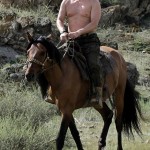
Mad, thoughtless or just psychotic?
"The no-mans land between Physics and the psychology of the Unconscious [is] the most fascinating yet the darkest hunting ground of our times." Carl Jung.
Question. Within this subject, who or what is used to represent that mental aspect of ''to hunt'' ...for something. Question two. Why? Try ''something'' in the usual box.
"There is an idea so central in Swedenborg's psychological spiritual findings that to grasp it is to grasp the real basis of mind, or human experience and the nature of the worlds we are destined to experience beyond this one. This idea revolves around the concepts of love, affection and feeling."[ Chapter 5, 'The Presence of Other Worlds'].
In other words if ‘B’ is a priority over ‘A’, [being an alternative expression to the hypothesis given earlier i.e., "You cant have one without the other...but one has to come before the other." [ In relation to an understanding of the ''divine bit'' WITHIN THAT FRAMEWORK of A/B/C...in relation to the 'self' [always represented within this subject; in one form or another; as the 'psyche']. Then another way of expressing the same could be... ‘A’ can be ‘influenced’ by ’B’ and/or ’C’. Think about it. In relation to cause/effect and ‘synchronicity’. That same link to "Like attracts like". Possibilty of. That logic again. Is-nt life a ‘bummer’ sometimes? i.e., a ‘struggle’.[Key]. Dont forget those first impressions.
As it is with those constant struggles between 'gods' and their 'relations'. Incestuous? Think about it, in relation to the psyche. An individual one. ['The marriage of Cadmus and Harmony' by Roberto Calasso]. Or 'Mythology' by E. Hamilton. Or 'Concerning the Gods and the Universe' by Sallustius.
Cersei /Jaime Lannister? {Game of Thrones}.
Side note: From the teeth of the serpent/dragon that Cadmus slew sprouted 'warriors'. ['The Chase' 2022].
"The transmission and interpretation of myths constituted not only one of the highest arts of the ancient world, but also, as the theological canon of Greek gematria shows, a sacred science as well. It is sadly representative of our time that the word myth, in common usage, denotes an untruth, as in the phrase, ''its just a myth.'' In antiquity, the word 'mythos' had just the opposite meaning and denoted a traditional narrative designed to entertain, to educate, and to transmit the very soul and gnosis of the culture."................"Therefore, if we are to gain insight into the nature of the 'gods' [those divine principles, that underlie creation] a particular instructive approach involves the philosophical interpretation of myth." [Chapter one, 'Jesus Christ Sun of God'. Mentioned elsewhere].
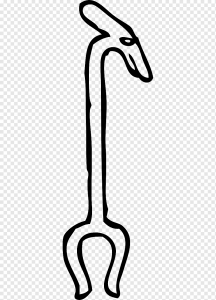
Thumb and index finger?
Hermetic analogy..."The forces do not work upward from below, but downward from above. The things in 'heaven' receive no benefits from the things on earth; but the things on earth receive all benefits from the things in 'heaven'.['Giordano Bruno and the Hermetic Tradition', or Chapter nine. 'The Master game.'/Hancock+Bauval].
''The Middle Eastern river known as the Jordan is known in Italian as Giordano.'' ['The Chase'].
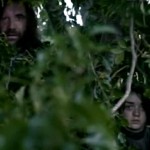 This really is a story that has never been told before, and if there is the possibility of any substance to this esoteric lore then maybe it needs to be at the very least discussed. Just in case domain [B] does exist and we find ourselves in it. We need more options to think about, other than what most of us have been taught. As proven by such books as ‘Survival Files’ /M.Allen, or even the example given in 'The Jolly Green Giant' by D. Bellamy.
This really is a story that has never been told before, and if there is the possibility of any substance to this esoteric lore then maybe it needs to be at the very least discussed. Just in case domain [B] does exist and we find ourselves in it. We need more options to think about, other than what most of us have been taught. As proven by such books as ‘Survival Files’ /M.Allen, or even the example given in 'The Jolly Green Giant' by D. Bellamy.
Think about it...Purely as an imaginary exercise. If ‘B’ did exist. What would you expect? There has to be 'reason' to it, should it 'exist'. Every thing has reason to it, this 'subject' cannot be any different. Therefore what could those 'reasons' be. What could those possibilities be?...Without thinking/discussing such possibilities. How could we expect anything. Hence the link to the word, Limbo. What better word to describe... an ‘unknown’ state of mind...and its possible consequences.
Maybe this information is that lost knowledge that we are told the ancients had worked out but that which modern man and woman due to present life's commitments have not had the time or patience to rediscover? A subject that if pigeon holed and slotted in its ‘appropriate’ hole would be placed in the ‘religious’ one. And yet this is a religion that is not a re-ligion. To understand only what some are trying to tell us, [by implication]. Without any ‘religious’ connotation /affectation . A personal journey for all. From A to C . Sense or non-sense. A possibility or not?

The Magdala Stone. Altar?
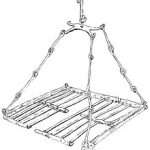
Twentysix links.
".... god rebuked Job for understanding so little. 'Where were you when i laid the foundations of the earth? When the Morning stars sang together { 'configuration of planets'?} - and all the 'angels' shouted for joy. Have you entered the springs of the sea or walked the depths of the deep? Have the gates of death been opened to you? Do you know where the 'Sun' lives, and where the 'darkness' comes from? Can you bind the chains of Pleiades or loose the belt of Orion."[Job 29:2-4]. See anything?
'The Book of Job' / Stephen Mitchell.
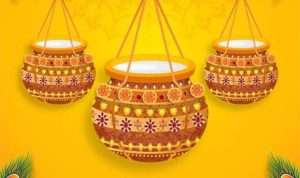
"Symbolically, the number three refers to the establishment of a relationship between two previously unrelated or opposing principles. For example, a line drawn between two points creates a relationship between the two points...'Understanding' is an emotional, rather than an intellectual, function. It comes from the heart {'bosom'?} rather than the head. We could say that the number 'three' is a quality of the soul {'carriage'?} rather than of the spirit. The more we understand, the more we are able to reconcile and relate. For example, words beginning with the prefix 're-' {which literally means 'back again'} tend to be gentle, healing words {Sagittarius / Chiron link?}, describing the bringing together of what has been previously separated: re-member, re-lationship, re-medy, re-pair, re-solve, re-form, re-concile, etc...The law of three can be observed in action in very many areas of life." [Page 122, 'Mapping the Psyche' volume 1. C. Martin].
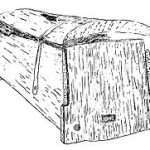
Mastermyr chest.
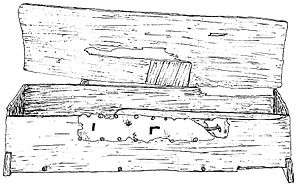
Mastermyr chest. GOTLAND. Most of the find had been placed in the chest, but there were also objects around it such as three bronze cauldrons, three bells and a fire-grid of iron. A chain, made up of 26 figure-of-eight shaped links, was wrapped around it. It served both as an extra lock and handle since the chest was too heavy for the original handle. The chest and the other items had probably been placed in a boat which capsized and sank in the lake.[6] Another theory is that the chest was temporarily hidden at the water's edge. The chest contained Viking-era blacksmithing and woodworking tools. It also contained several products of such work, including elements of several locks. The chest and its contents provide a valuable insight into technology during the Viking Age.
Egyptian equivalent - Festival of the re-union. Enlarged elsewhere.
And/or: "Hermopolis revealed the realization of Ptah's action through Thoth. This is the creation of the manifested universe, which is 'words' {Logos?}. Thebes revealed the reunion of that which had been separated." [Page 128 'Serpent in the Sky'].
"True religion is one; its dogma's are simple and within the reach of all." Quote by E. Levi.
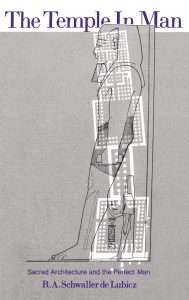
Whose leaning on who?
A working example: "The word 'temple' comes from the prehistoric Indo- European root tem-, which means ''to cut''. A temple is a sacred space {divine 'bit' link}, a place of retreat that is literally ''cut out'' from the busy demands of everyday existence....

'Line of sight'.
The Geek word temenos - the sacred precinct in which the sanctuary is located - originates from the same root as templum…. The Latin word templum originally meant a vast space, open on all sides, from which one could survey the whole surrounding landscape as far as the horizon. This is what it means to contemplate to 'set one's sight on'....it defines a 'field of vision'....The Latin word religio means ''to relink'', and the ritual performed in a temple is a re-ligious act, designed to re-link us to the universe {H/V?} and ensure a proper balance between humanity and the 'Cosmos'...." [Page 388 'Alexandria' Vol 3. D. Fideler].
'See' it? All as a means....?
Try ''Horizon'' and/or ''Running the Fields'' and/or ''Horizontal / Vertical'' to take subject material further.
Hence such statements as: "In the words of the Renaissance philosopher Pico della Mirandola, ''as a farmer weds his elms to vines, even so does the magnus wed earth to heaven." [Page 390 same book].
Fact or fiction. A possibility or not?
"This is the eternal way, and no one can invent or find another. One can certainly divide it into thirtythree stages [Freemasonry link - to name but one] - or even into 99 [Islam link] - if one wished. One can re-clothe it in intellectual vestments, or beautiful and simple symbolism. One can present it in diverse terminology; Sanskrit, Kabbalistic, Greek, Latin, etc. But one will always have to do with the sole way - and always the same way - the way of purification, illumination, and union." [Extract from the book by Tomberg. Emphasis and parenthesis; this readers].
"O children of Adam. Indeed, we have given you garments to cover your 'nakedness',[key] and as a thing of beauty;...but the garment of of god-consciousness is the best of all. This is one of gods messages....that human beings might take it to heart". [Quran 7:26]
Sheep decan.
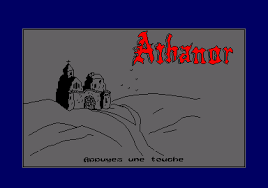
"All creative scientists know that the true laboratory is the mind, where behind illusions [puffers?] - they uncover the laws of truth." That link to the overall subjects main teaching aid. Can you see it yet?
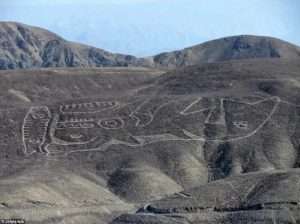
The Nazca killer whale. Its most ancient glyph. Upstream or downstream?
''Purification'' in relation to pushing through into something new -to define it [by way of those three universal 'aspects' - as one has to apply in anything 'new', i.e., as a representation of the 'mechanics' of a learning process. The Alchemists define that initial 'stage' as Calcination. ''Illumination'' explains itself, i.e., something that one was ignorant of initially and/or 'disliked' for whatever reasons but now more 'sensitive' to it. ''Union'' - already explained - as above, i.e., unlike most other subjects - this one has that 'extra' benefit to it - should that is - if the subject; and therefore its 'material' be relevant - and that - as already mentioned at the beginning of Part 1 - is for the reader to decide - ''that is there journey''.
'Great flood'.
 Side step: "Do you ever find yourself mentally in a place so horrible that you cannot understand what you have done to end up there; a place so horrific that waking up is depressing? This feeling is called “the belly of the whale” and is characteristic of a time in life when one struggles to transform into his or her greater self.....
Side step: "Do you ever find yourself mentally in a place so horrible that you cannot understand what you have done to end up there; a place so horrific that waking up is depressing? This feeling is called “the belly of the whale” and is characteristic of a time in life when one struggles to transform into his or her greater self.....
Spermaceti, originally mistakenly identified as the whales' semen, is the semi-liquid, waxy substance found within the whale's head. "
Jonah.
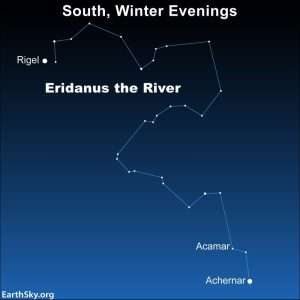
Begins at the left foot of Orion.
Defining however what they imply by the word ''divine'' - for countless generations - makes sense of that final sentence, i.e.,top/down in relation to bottom/up. Enlarged elsewhere.
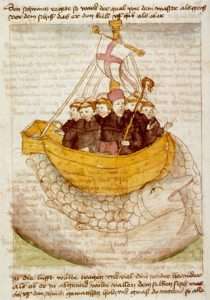
St. Brendan and the Whale.
"The Chemical Furnace was formed by La Caille from stars within the southern bend of the River Eridanus; but modern astronomers, by whom it is still recognized, have abbreviated the title to Fornax. The Chinese know it as Tien Yu, Heavens Temporary Granary." ['Star Names and Their Meaning']. Try ''Barley'' and/or ''Hen''.
'Mans Search for Meaning' / Viktor Frankl.
Question. Why was that word highlighted by the author?
"In ancient Roman religion, Fornax was the divine personification of the oven (fornāx), the patroness of bakers, and a goddess of baking. She ensured that the heat of ovens did not get hot enough to burn the corn or bread. People would pray to Fornax for help whilst baking....

Leavened or UNleavened?
''Cats were thought to have been domesticated to protect granaries from rats.''

'Head' of the cornerstone?
"The story behind the name: The constellation Fornax, originally Fornax Chemica (chemical furnace), was named in honor of Antoine Lavoisier, an 18th century French scientist and government official who was a major figure in the development of modern chemistry.
Fornax is visible to all observers located between latitudes between +50° and -90° and is best seen at culmination during the month of December. It is bordered by the constellations of Cetus, Sculptor, Phoenix, and Eridanus."
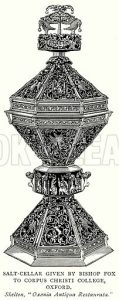
Salt-Cellar given by Bishop Fox to Corpus Christi College. How many 'triangles'? Any 'girdles' or 'belts'?
"Fornax is one of the 88 modern constellations. Visible at latitudes between +50° and −90°. Best visible at 21:00 (9 p.m.) during the month of December. The three brightest stars—Alpha, Beta and Nu Fornacis—form a flattened triangle facing south."
- "In the Constellation of Fornax the brightest Star is named Dalim (an Arabic name), Alpha Fornacis, and is located around 229 light years from the Sun. ...
- The second brightest Star is called 'Beta Fornacis', with an apparent magnitude of 4.45 it is still visible by the naked eye."
"Human understanding has had its morning; its noon shall come, and the waning follow, but god will be ever the same." [E. Levi quote]. God = [as one example] - YHWH. Find it to understand it. Find the part to understand the whole.
As a side note {'sidelight'?}... ''its noon [zenith] shall come''...indicative of those anticipated [prophesied?] 1000 years. Those 1000 good years - due to the universal appeal of a particular subject. The 'good' vibes that those inspirations and intentions will have on each generation. Question. What effect; if any; will that 'collective effort' have on 'its' surroundings? Its PHYSICAL surroundings.
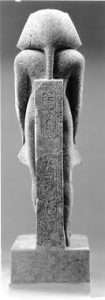
Rounded or square?
N.B. "The crucifixion was a 'pause' {'watershed moment'?} in a great cycle, like the pause one gets in any cycle when the nadir or zenith of an 'arc' {key} - is rounded."
Side note. See page 39 of the book 'The Rose Cross and the Goddess' for an example of the above's visual representation, i.e.,shade in the 'middle' bit. {Paperback/Aquarian Press}. Question. Maltese? Therefore 'eight' link?
A working example: 'Bowness' means 'rounded', or bow-shaped headland', from either the Old English 'boga', 'bow', and 'næss', or, more probably, the Old Norse 'bogi' and 'nes'.
Burgh on Sands to enlarge.
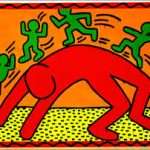
Leo/Virgo?
Analogy of same - even if - [if only for this reader] - in the 'poetic' sense..."The old beauty is no longer beautiful; the new truth is no longer true," - is the eternal cry of a developing and really vitalised life. Our civilisation has passed through the first empire of pagan sensualism; and the second empire of mistaken sacrifice, of giving up our own consciousness, our own power of judging, our own independence, our own courage, [authors having a 'pop' at the material world and the lack of understanding for anything else]. And the Third Empire is awaiting those of us who can 'see' - that not only in Olympus [i.e.,top/down link], not only nailed to the cross [i.e.,bottom/up link] - but in our selves is god. For such of us, the bridge between flesh and spirit is built; for such among us hold the keys of life and death." [Extract from the book 'The Magister' by M. Katz. Emphasis/parenthesis, this readers].
All in reference to his own particular path; his own chosen path - the Western Way, i.e.,the ritual stuff....''the first academic to complete the Masters degree in Western Esotericism at the university of Exeter." - Back cover of same book - Those keys however are universal; they can be learned - by way of the objective life; the objective stuff - and the best thing of all - wherever one may find oneself - wherever one may ''lay ones hat'' [or thinking cap?]. All before those bigger questions are asked.
Something that was once 'dormant' is now awakened. [keys]. Hence the link to the word 'Holy', [explained within, as well as within 'religions' Dictionary meaning]. Seriously think about it... if you truly want to go beyond something more than... 'scratching [key] the surface'... If only in understanding the meaning of one solitary word, i.e., 're-ligion'. Enlarged elsewhere.
